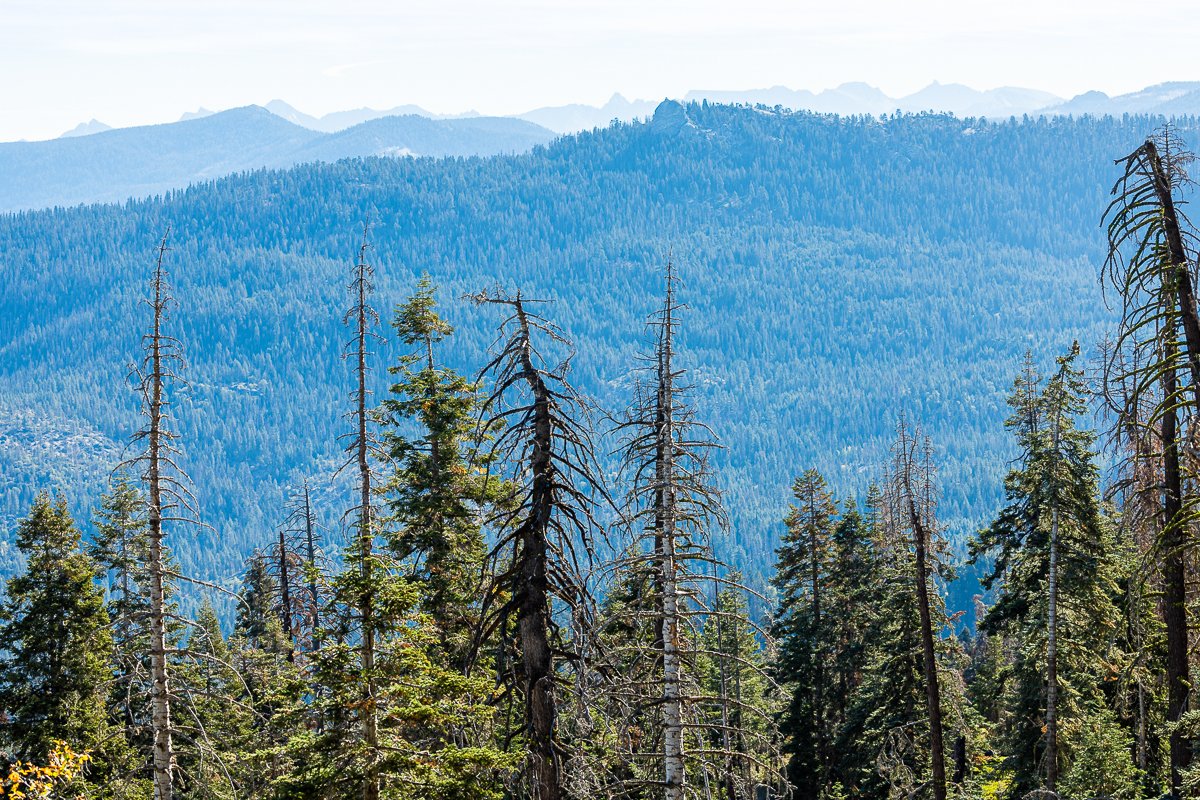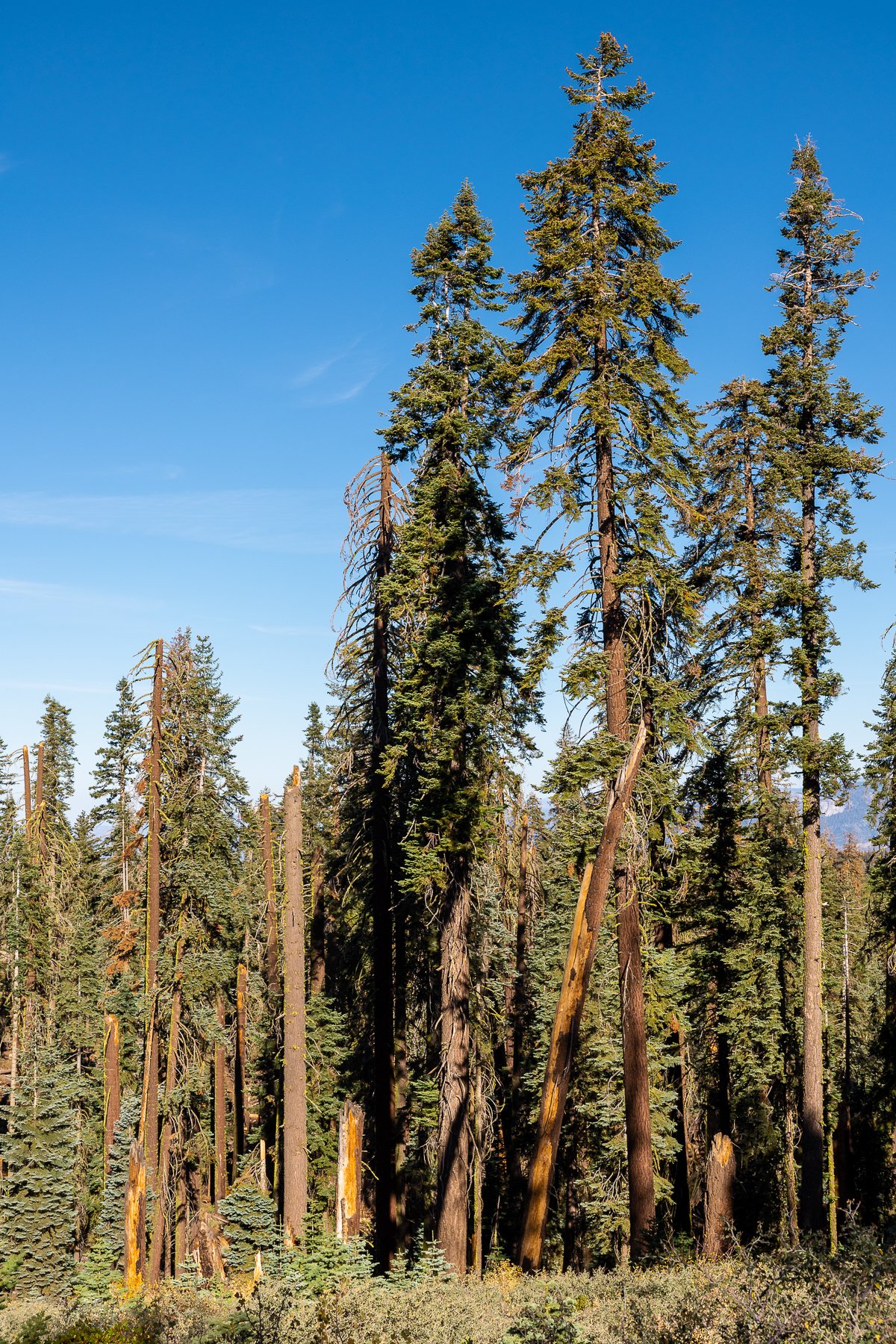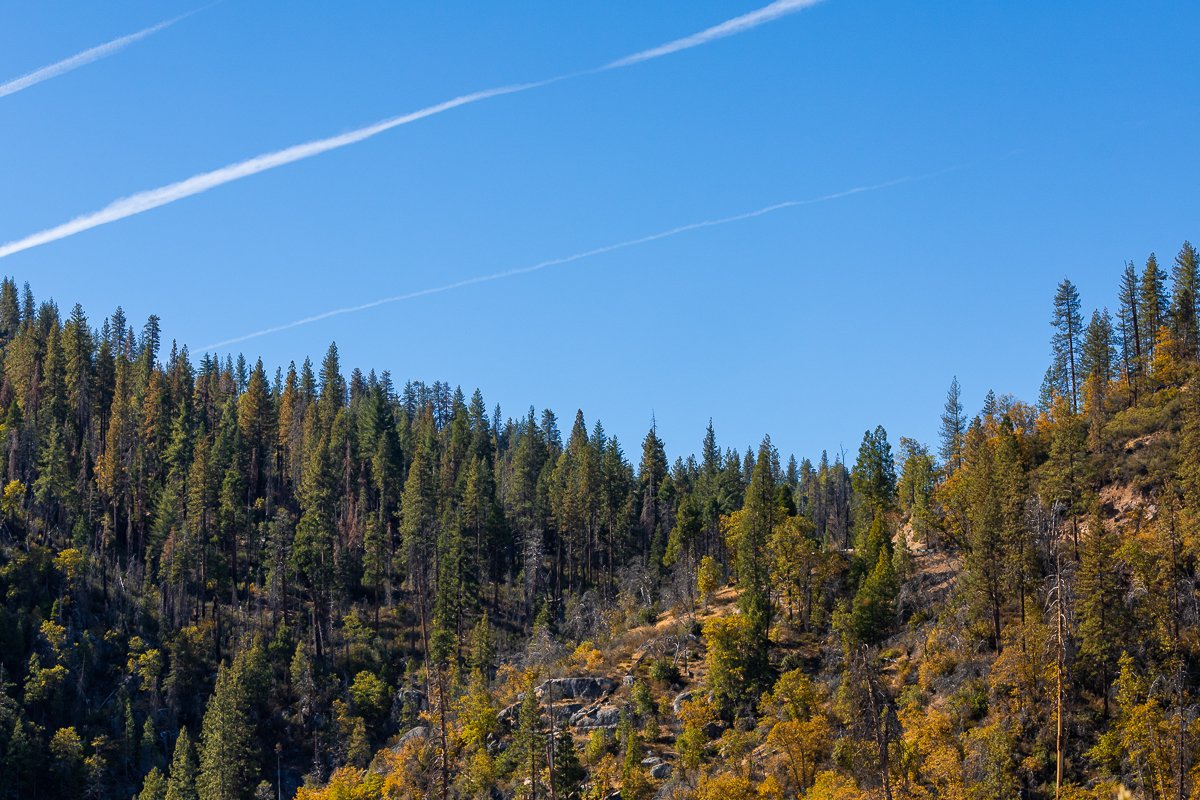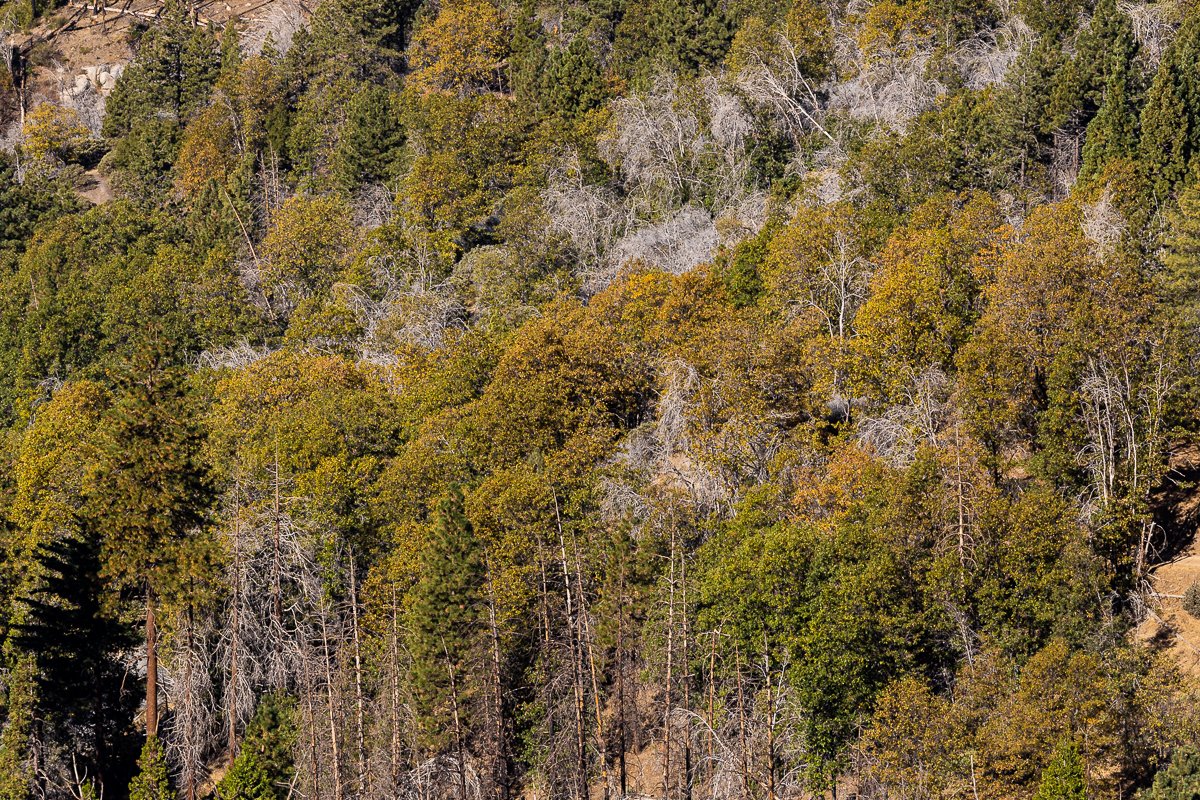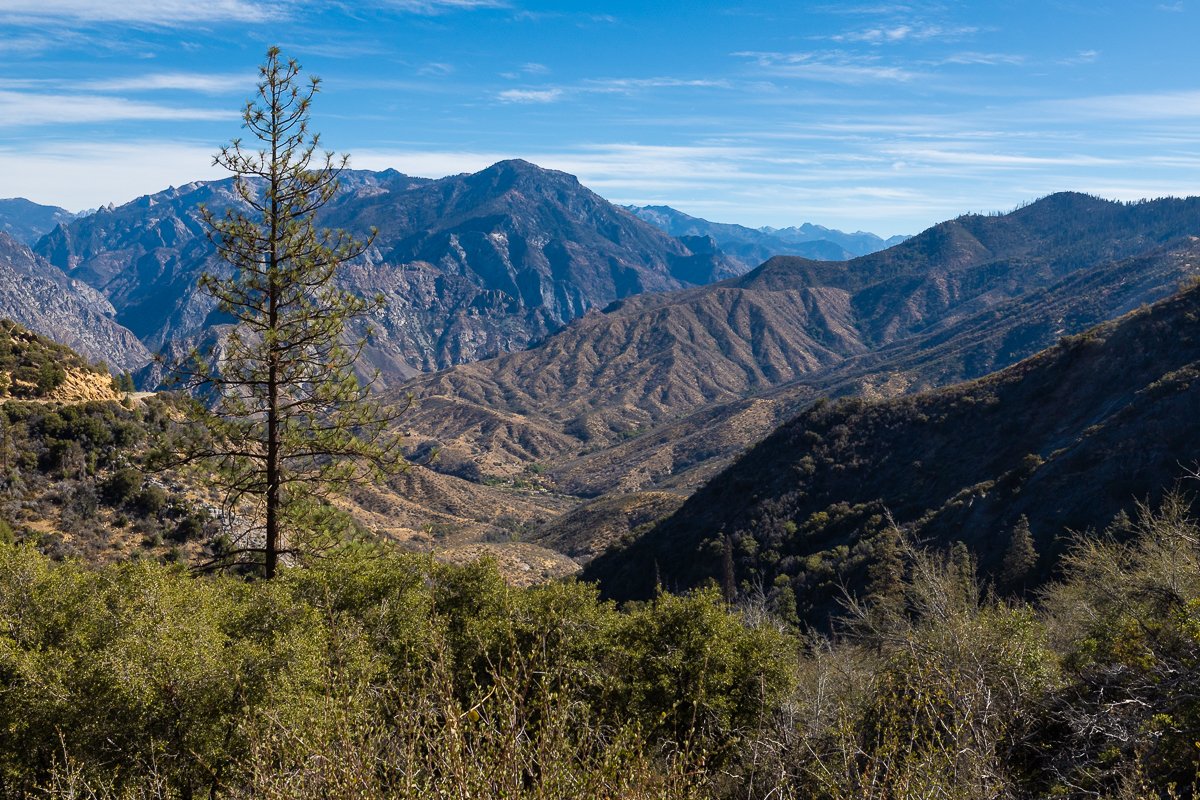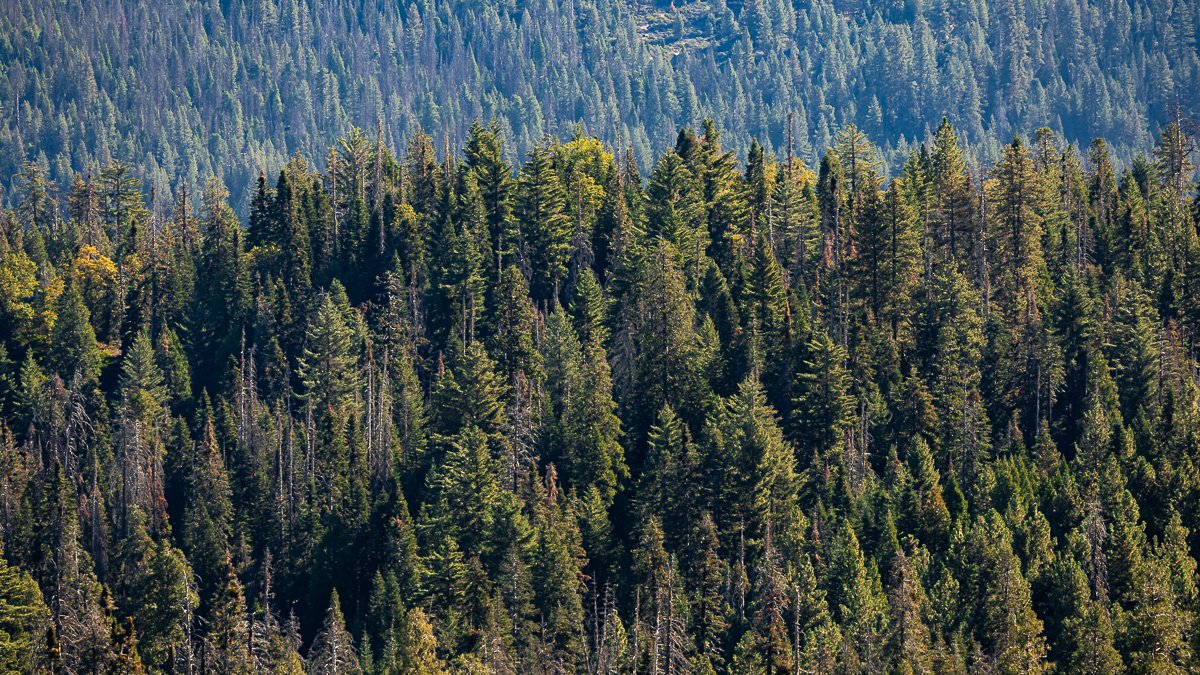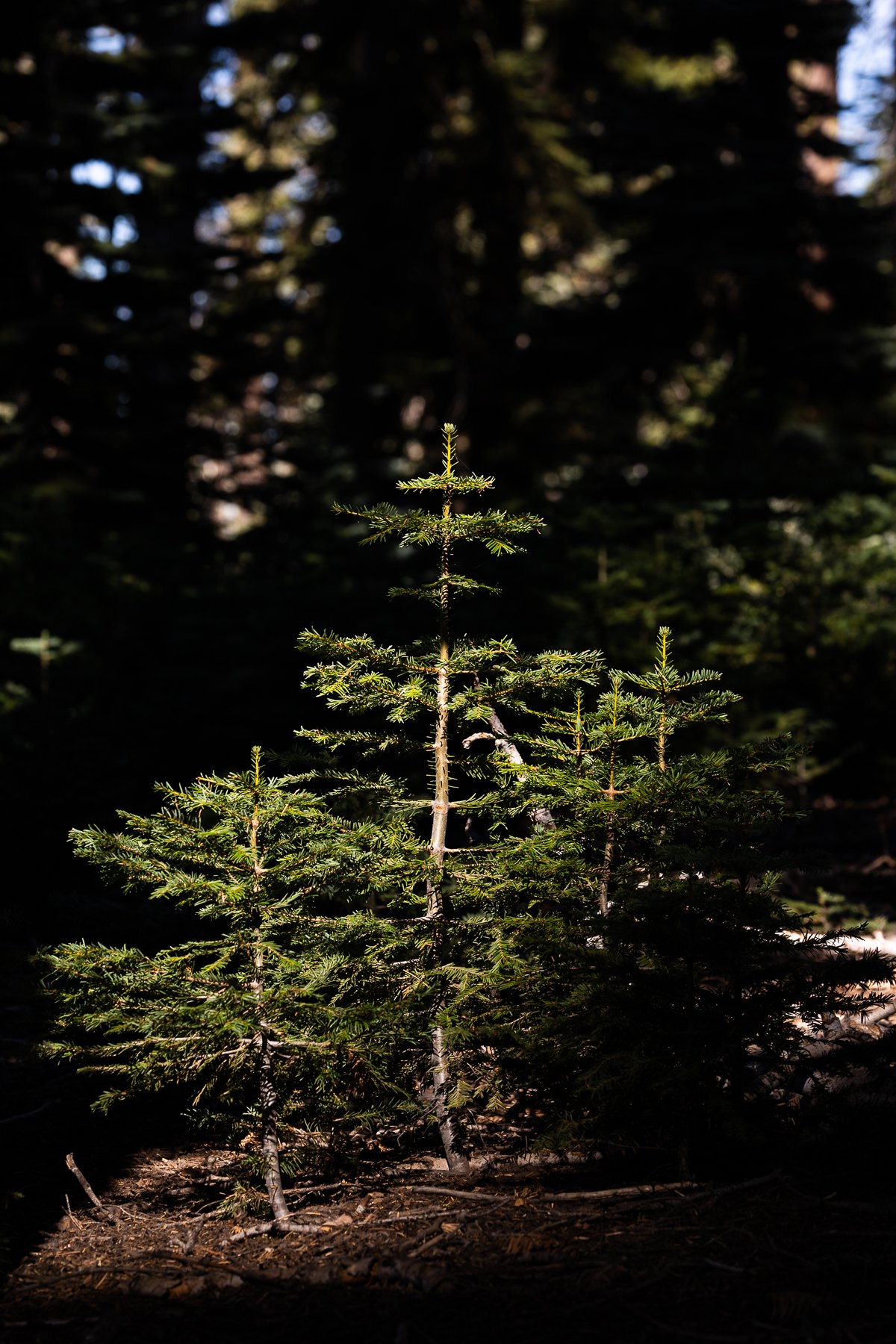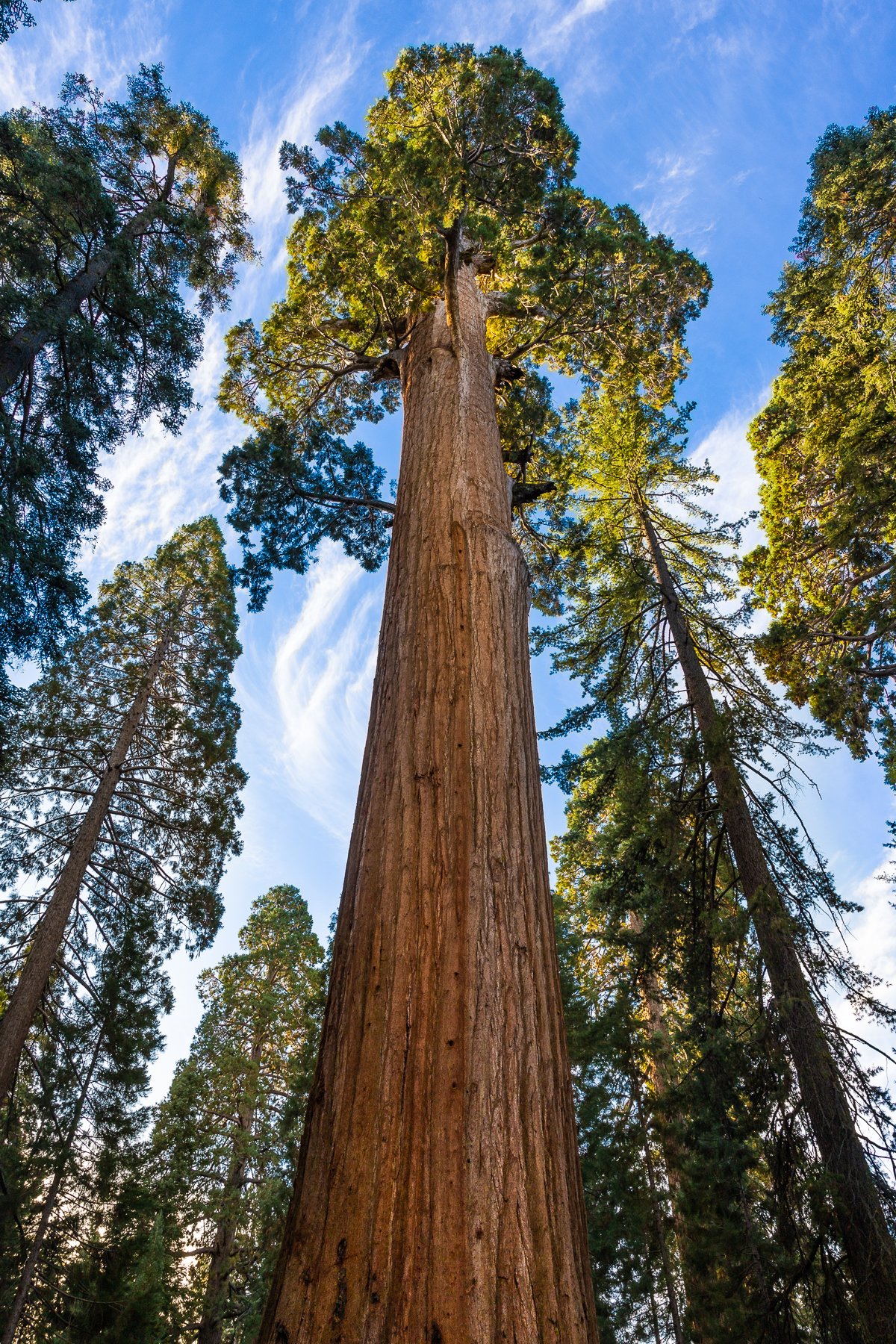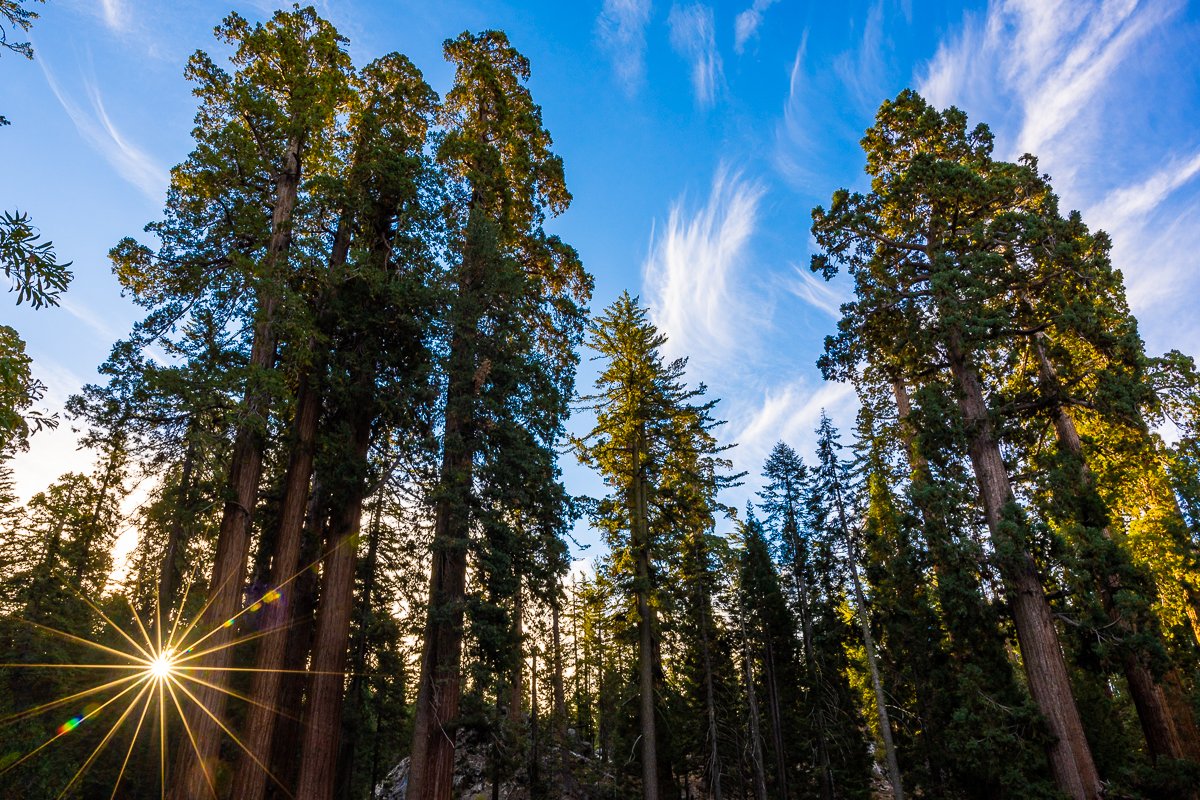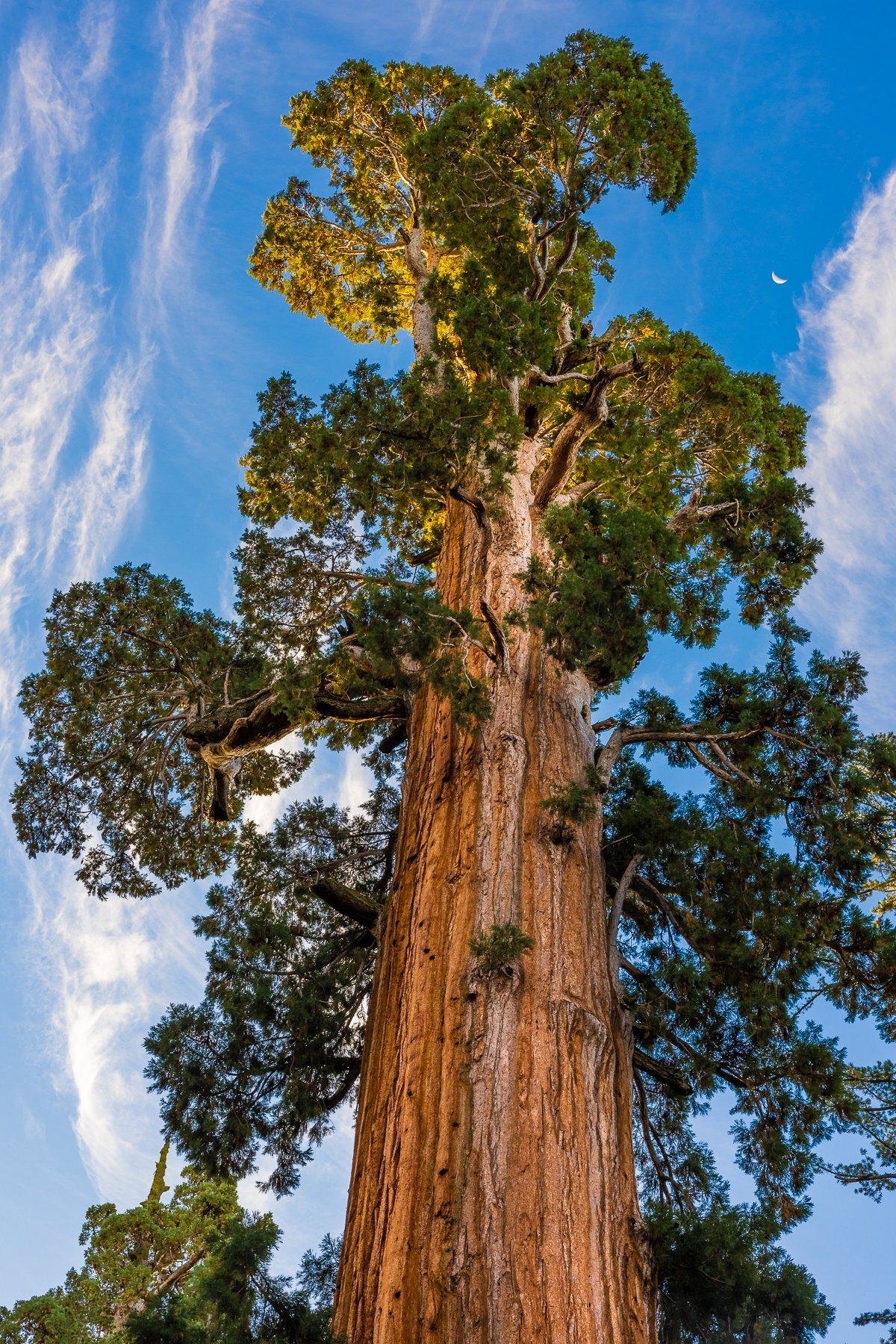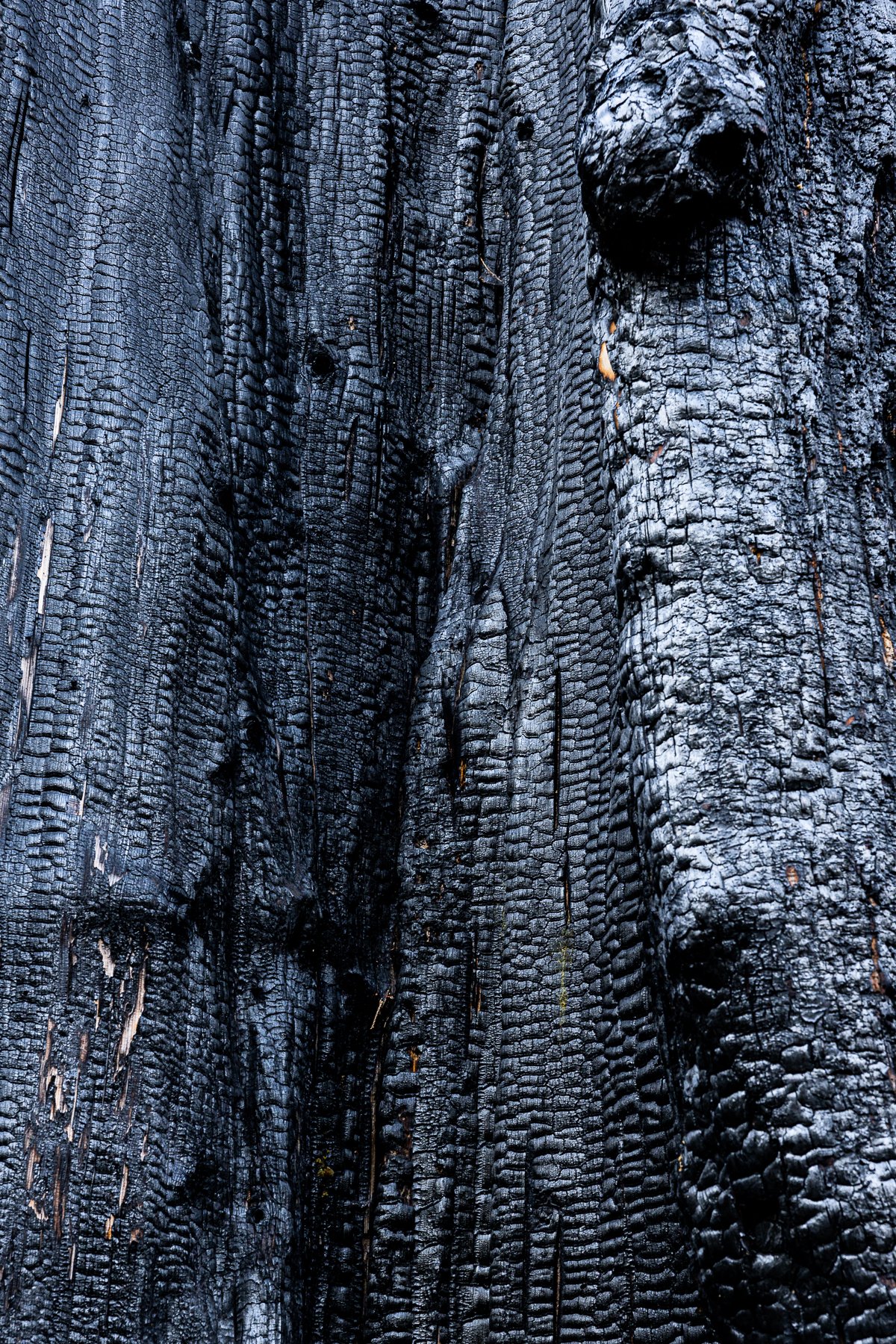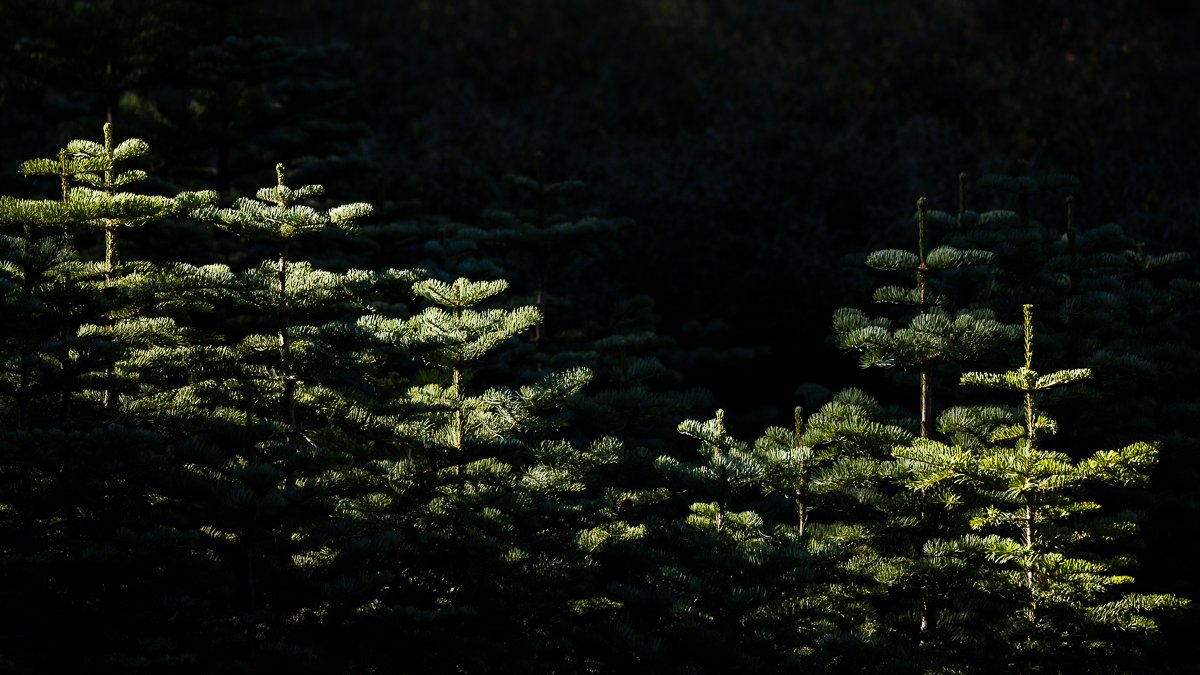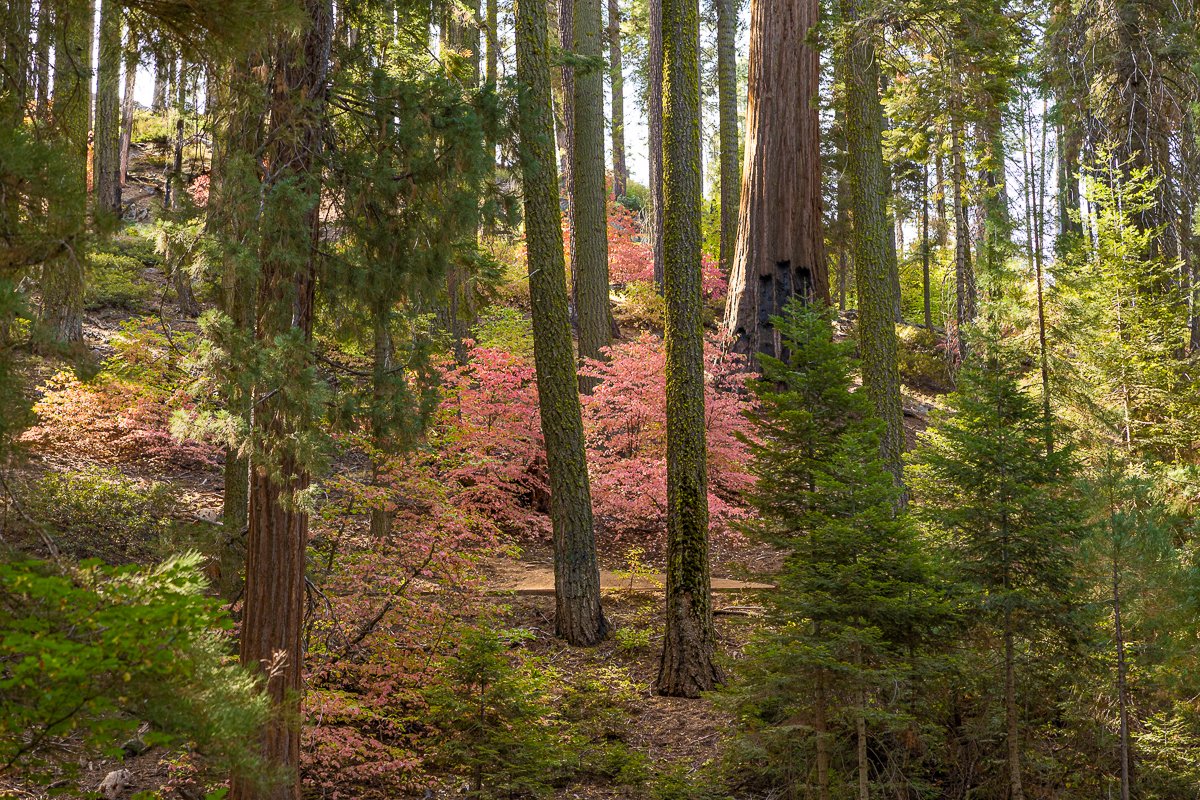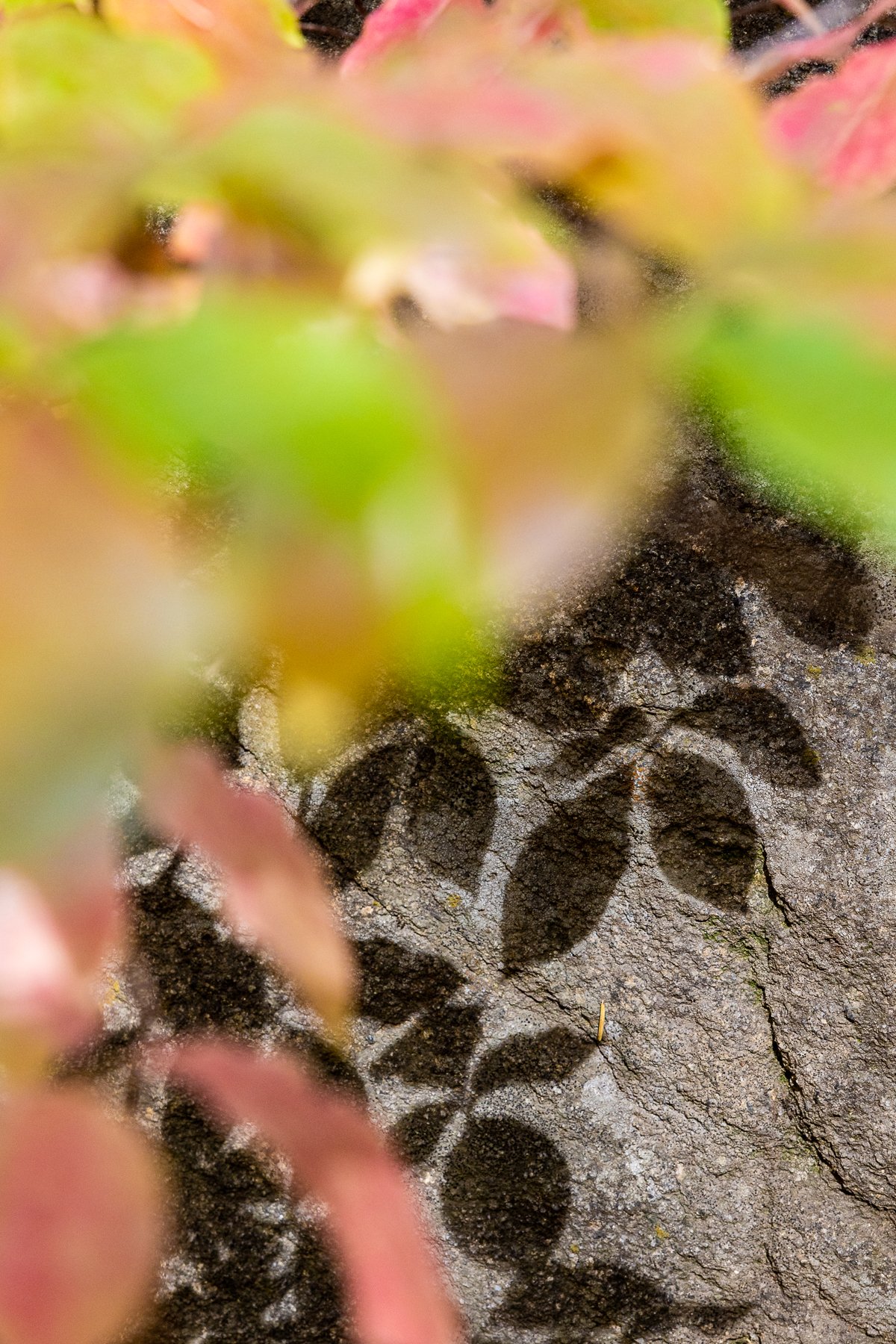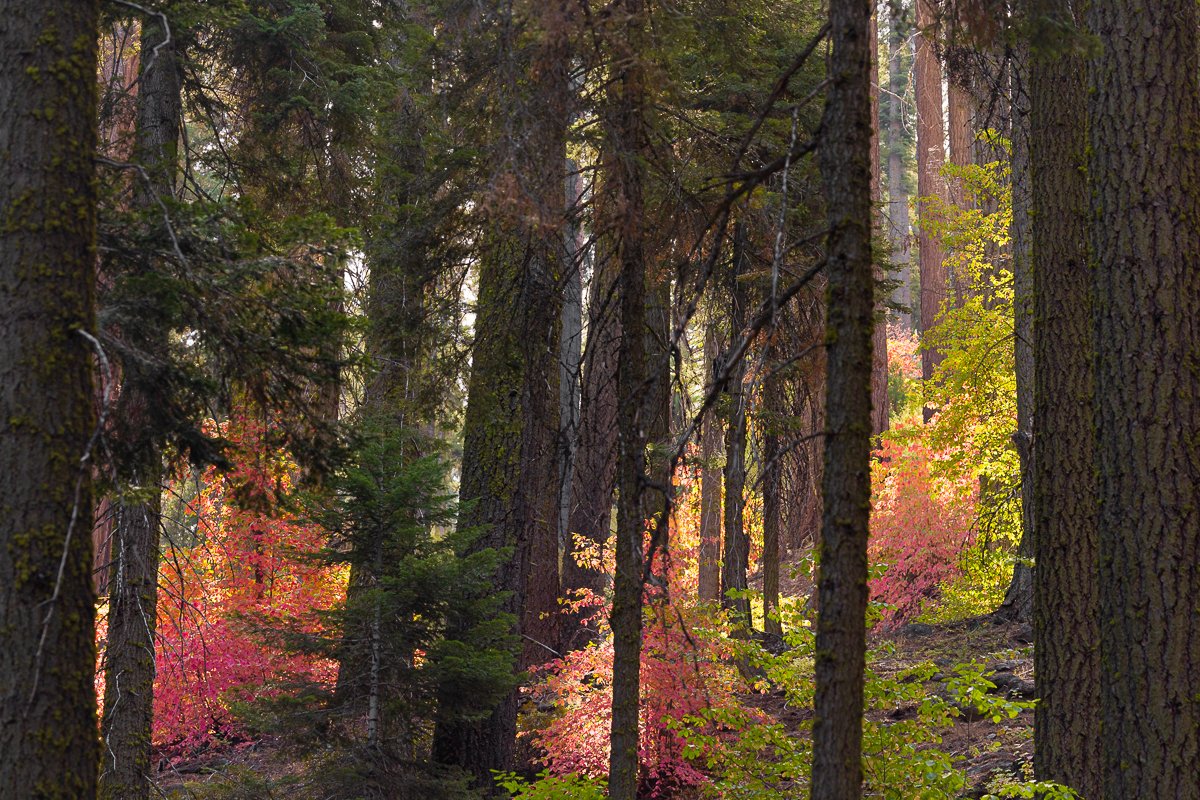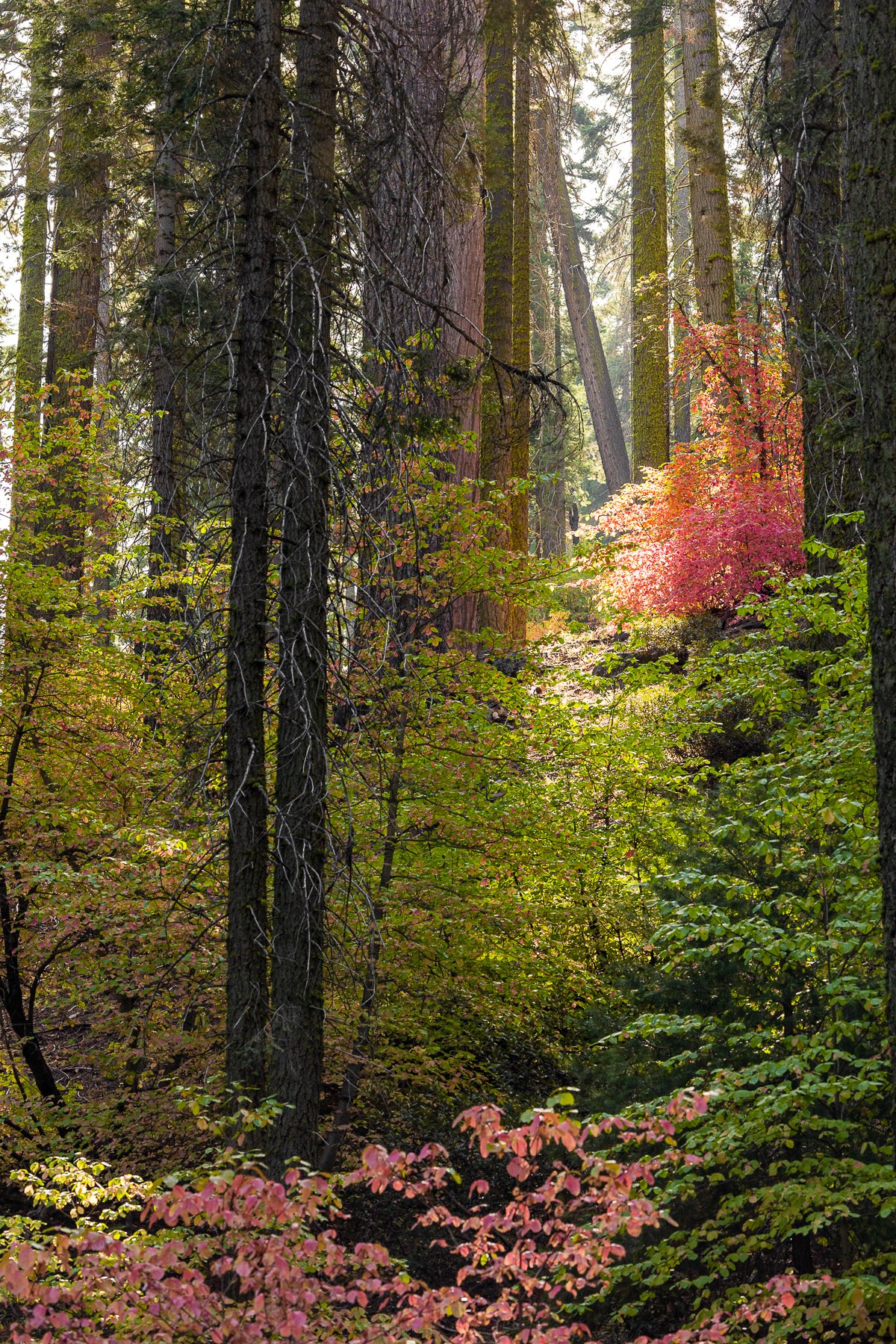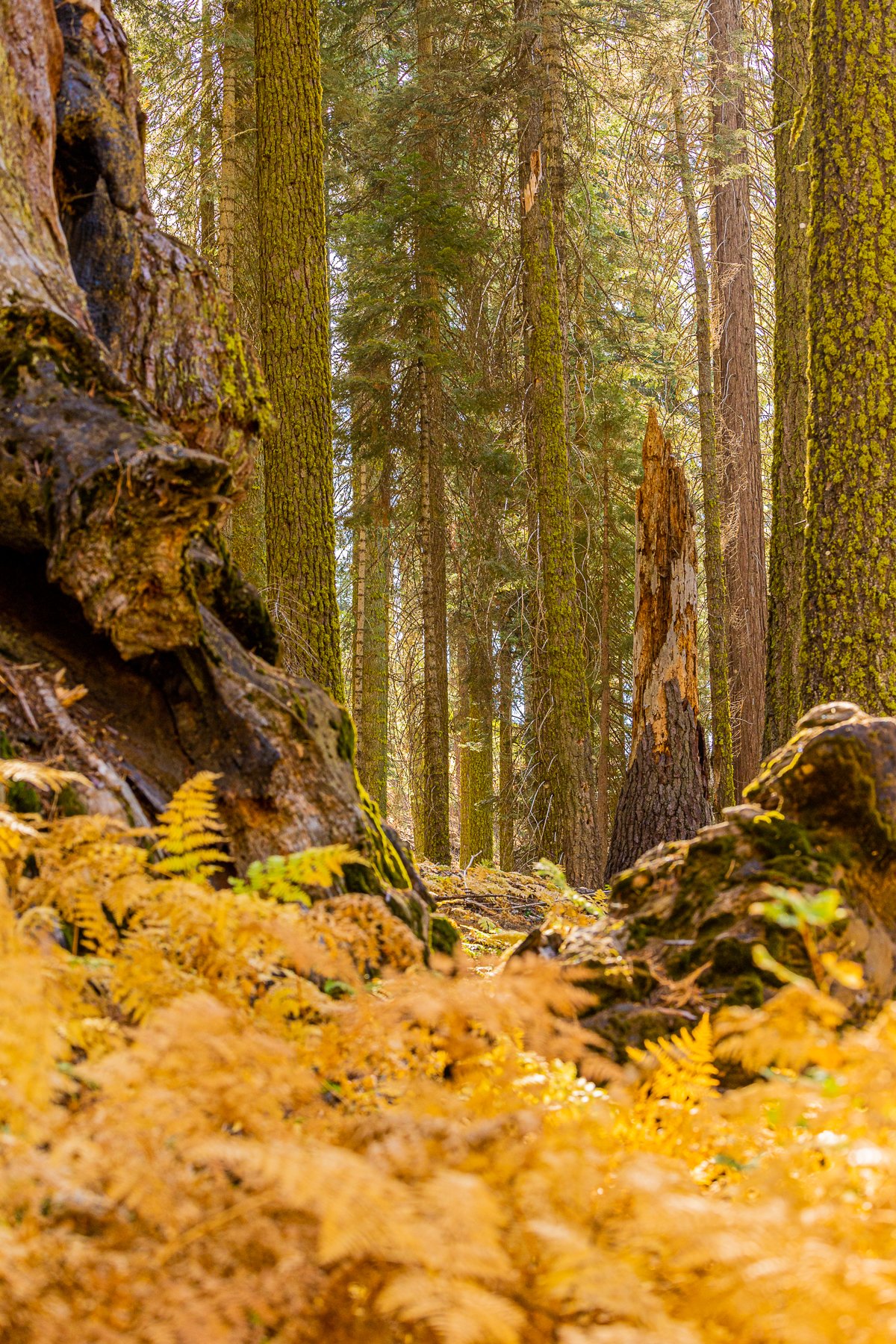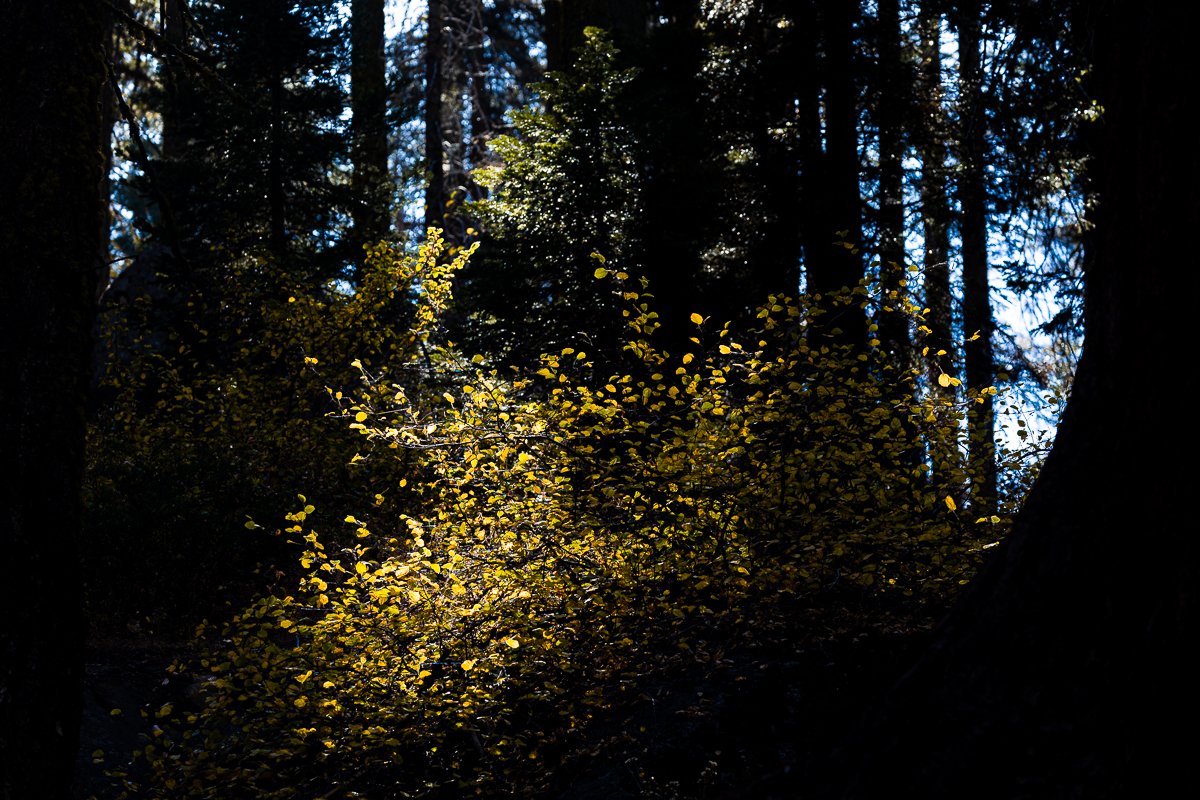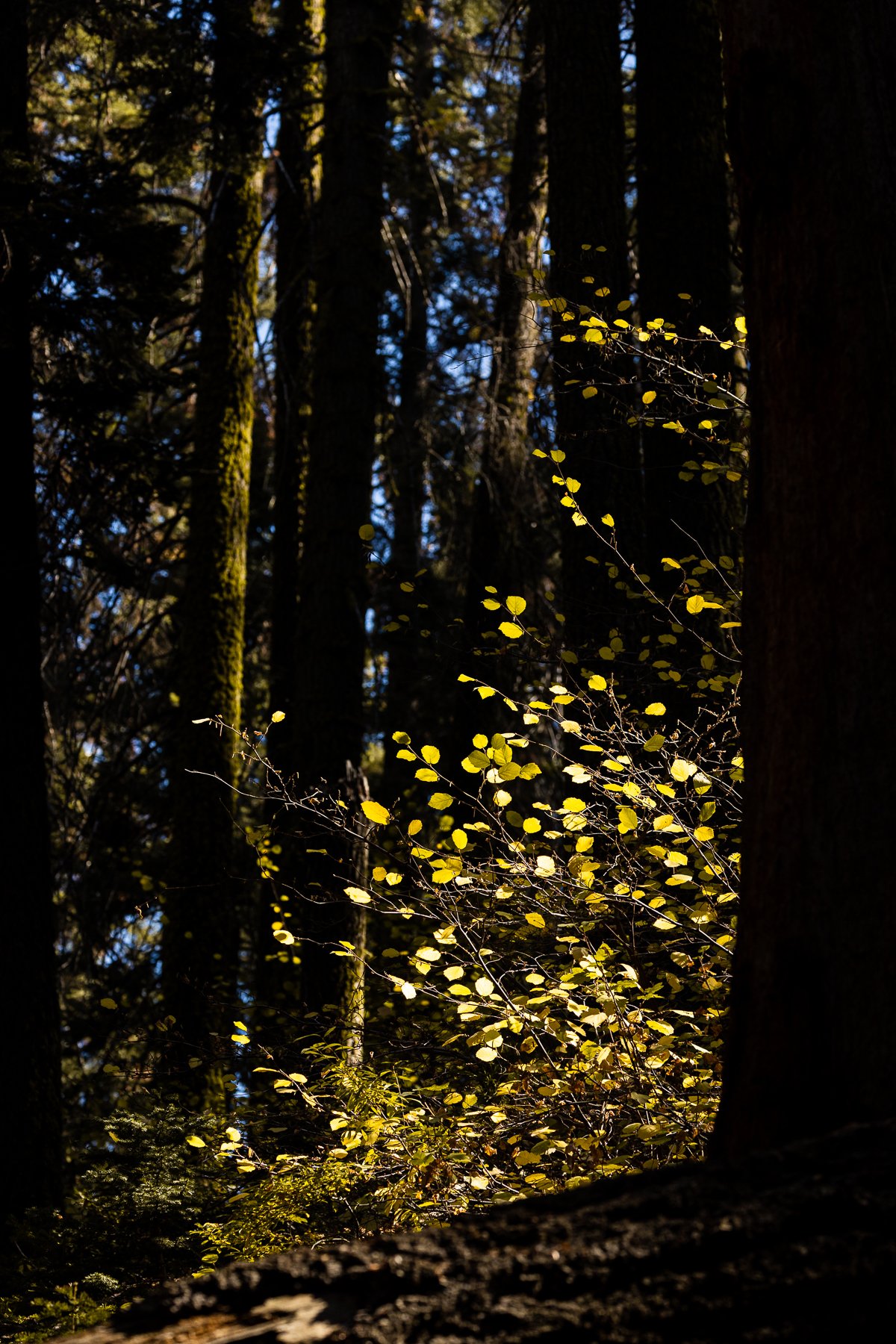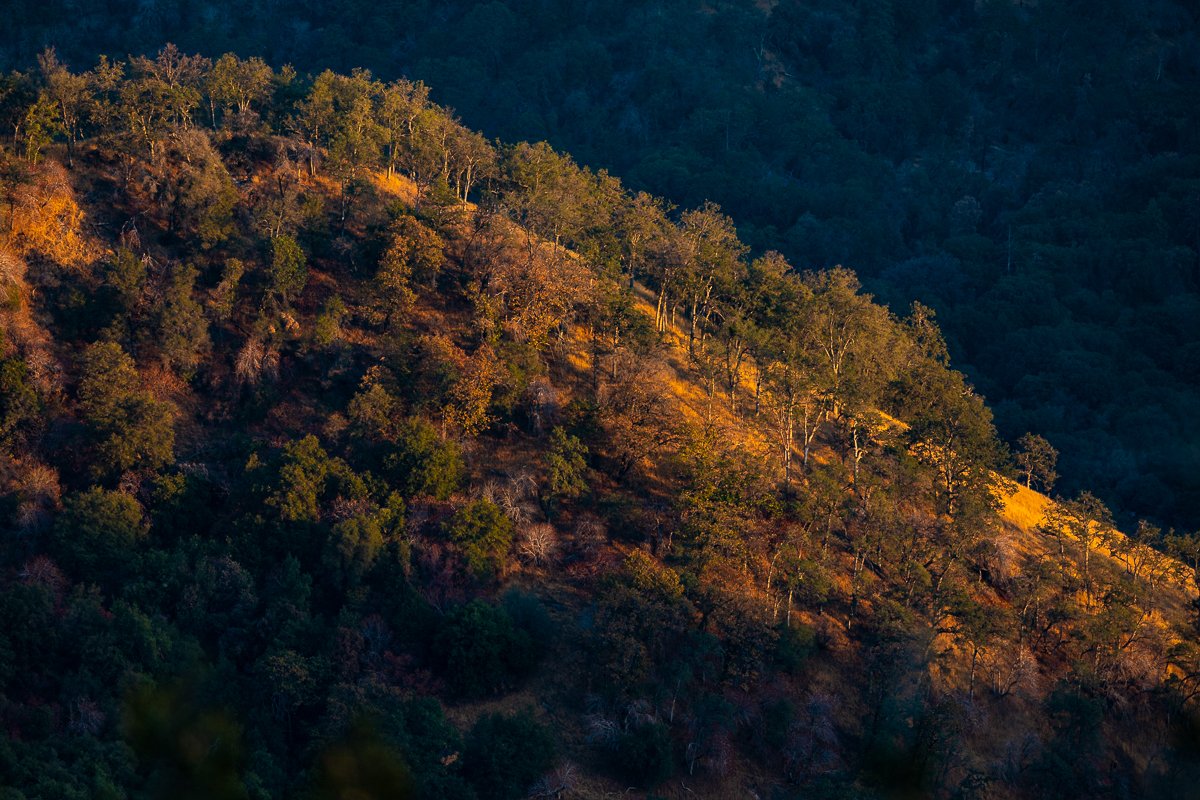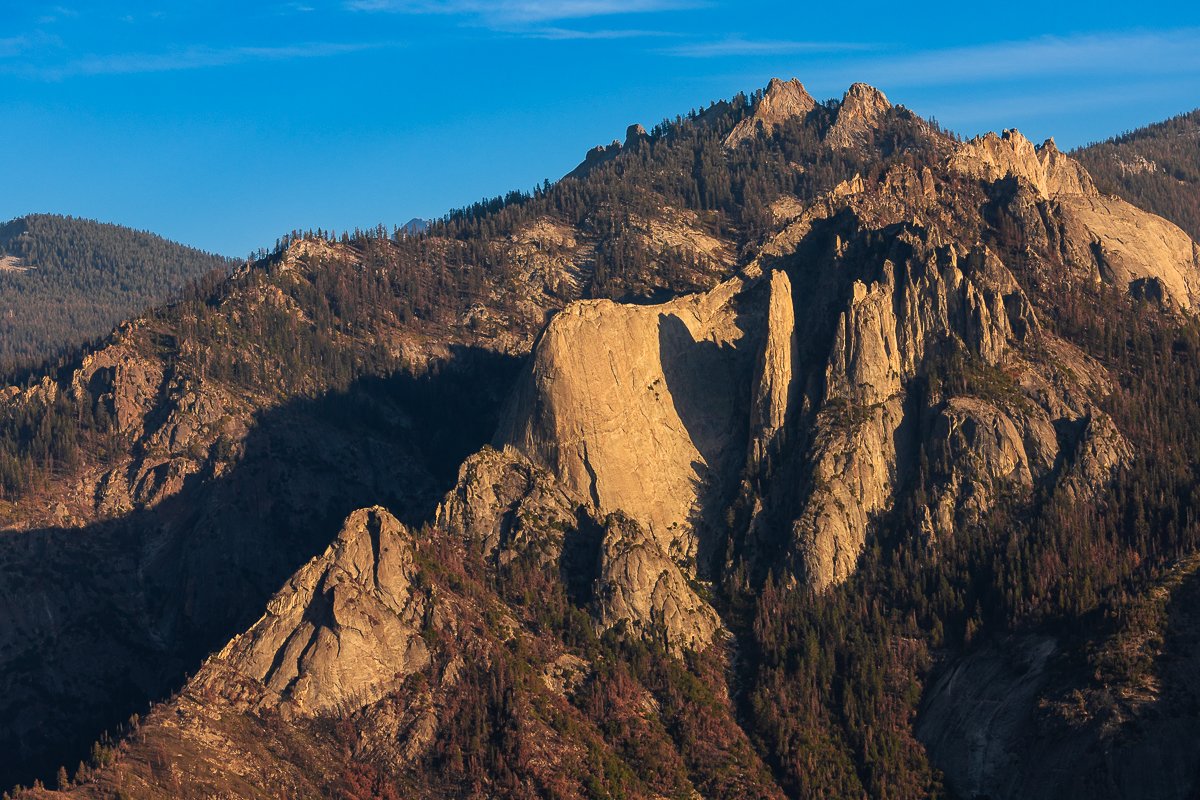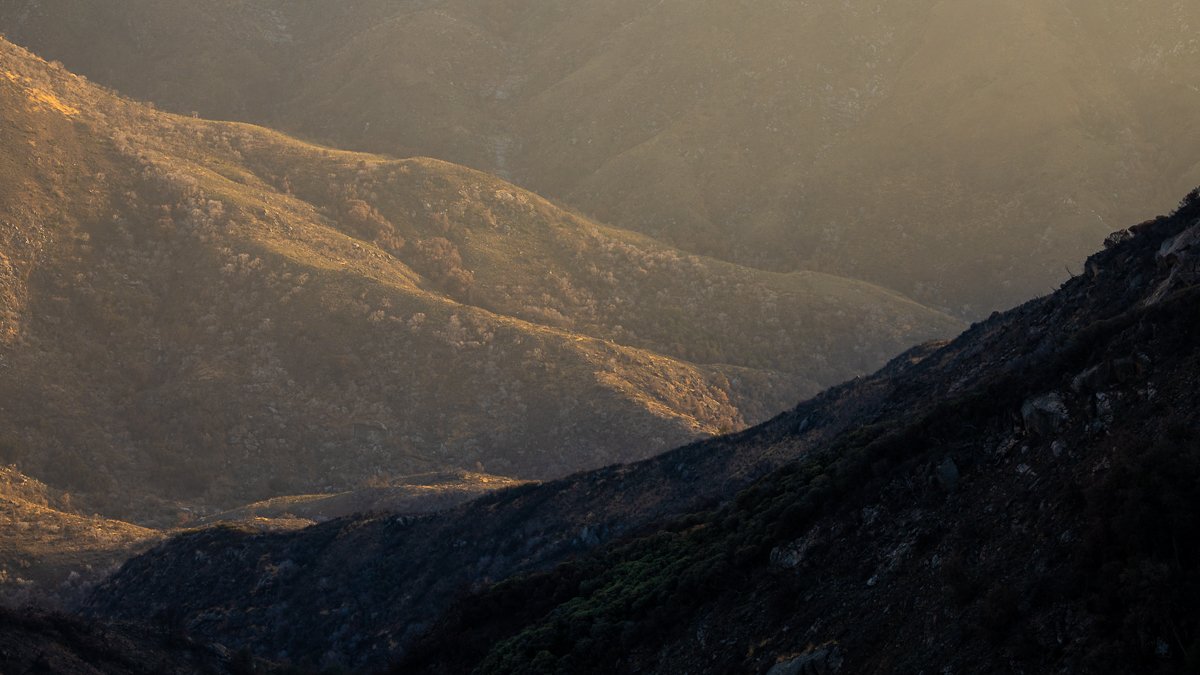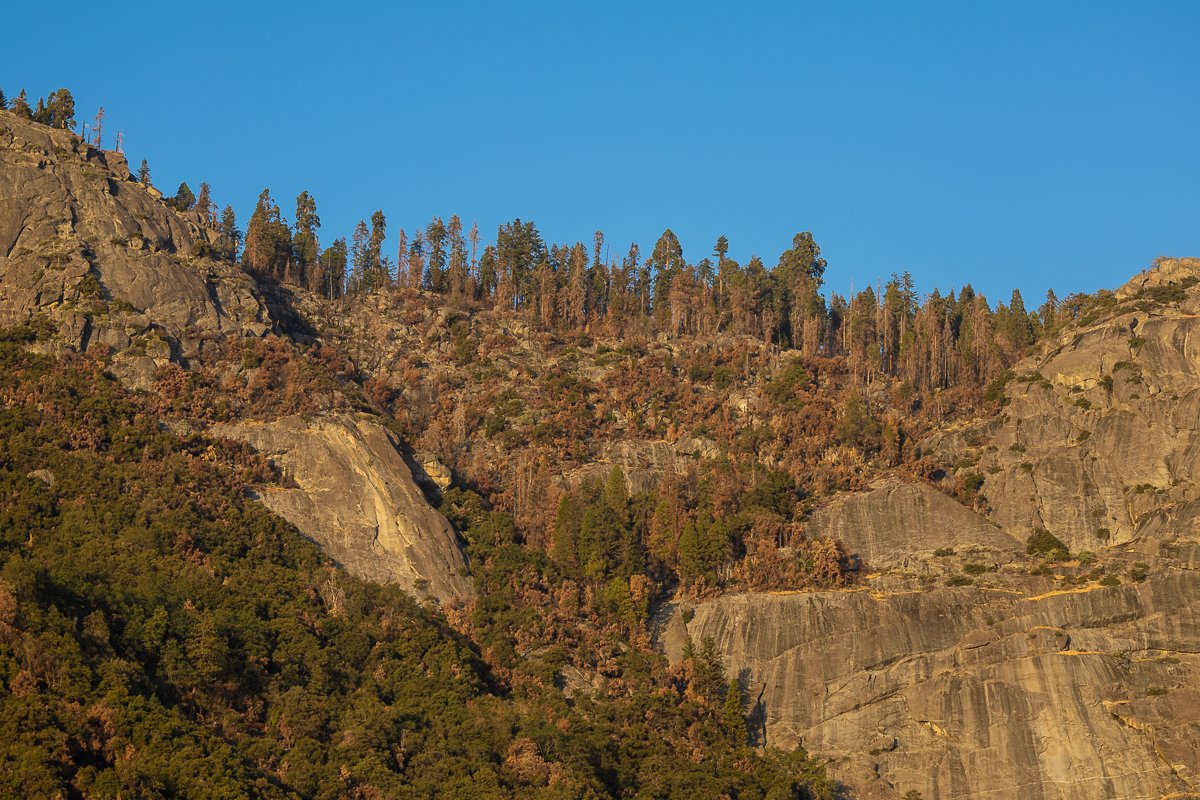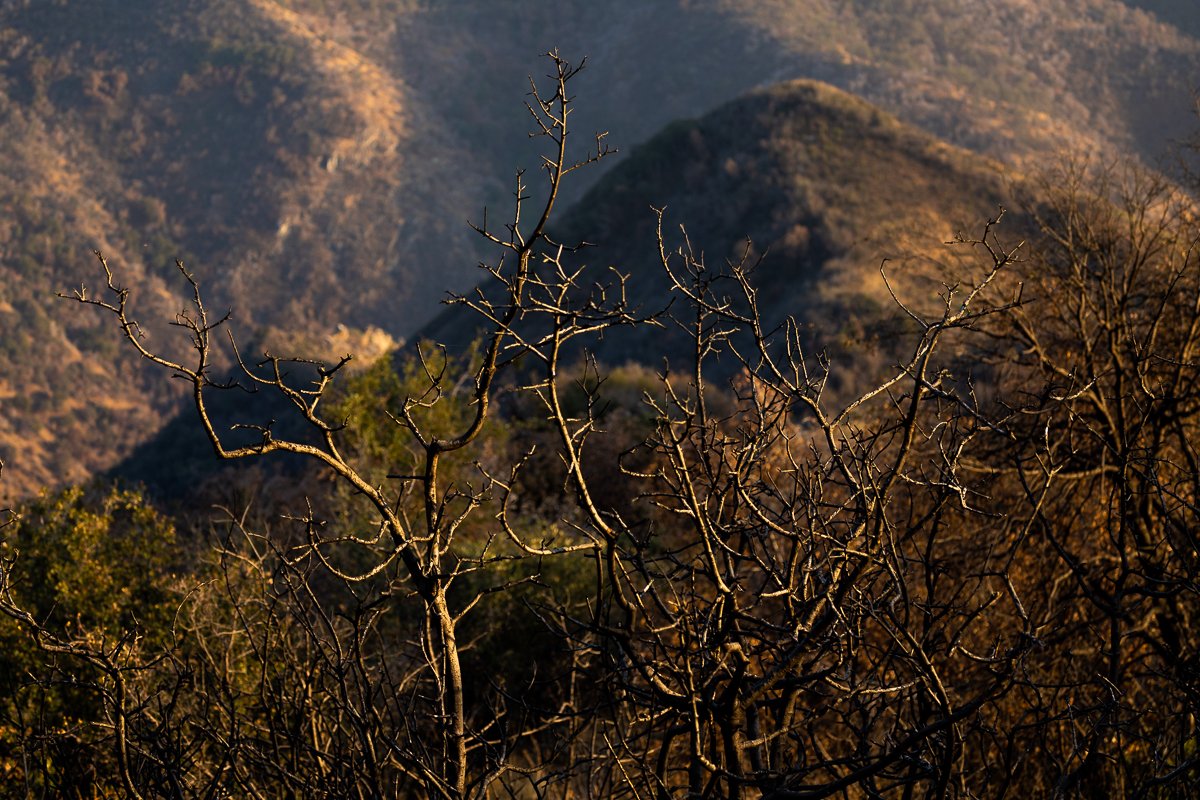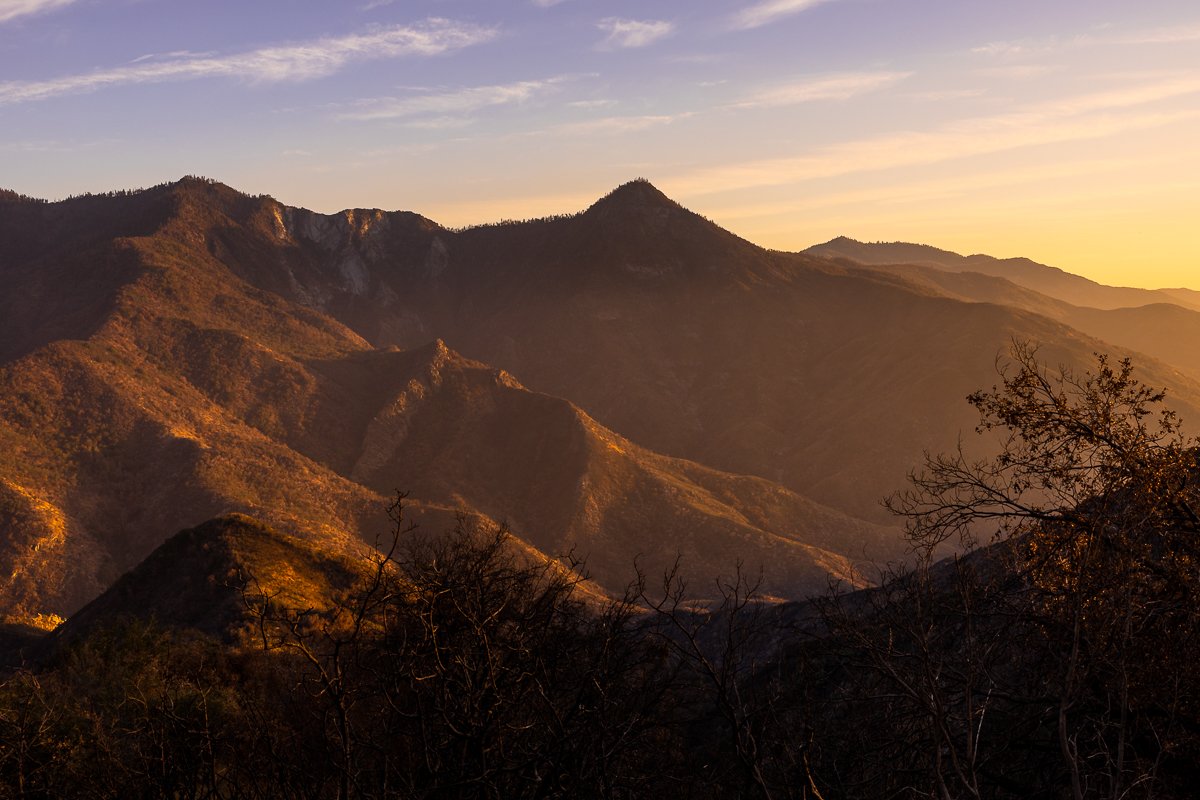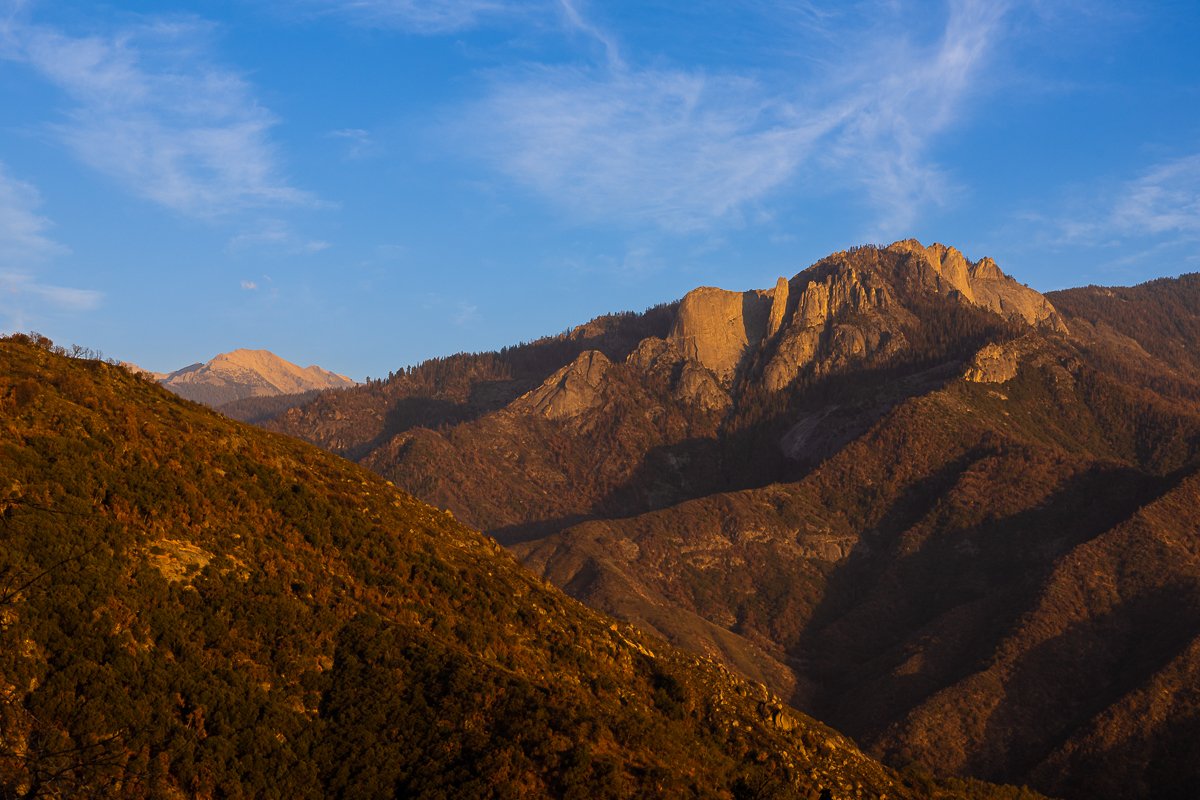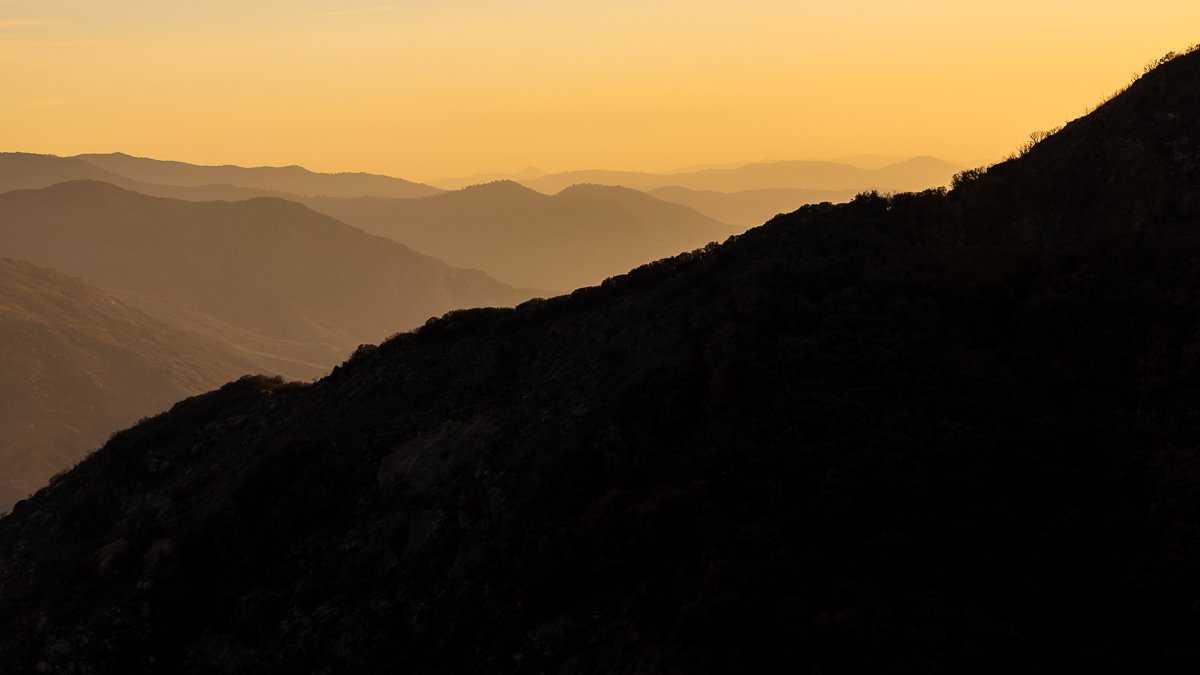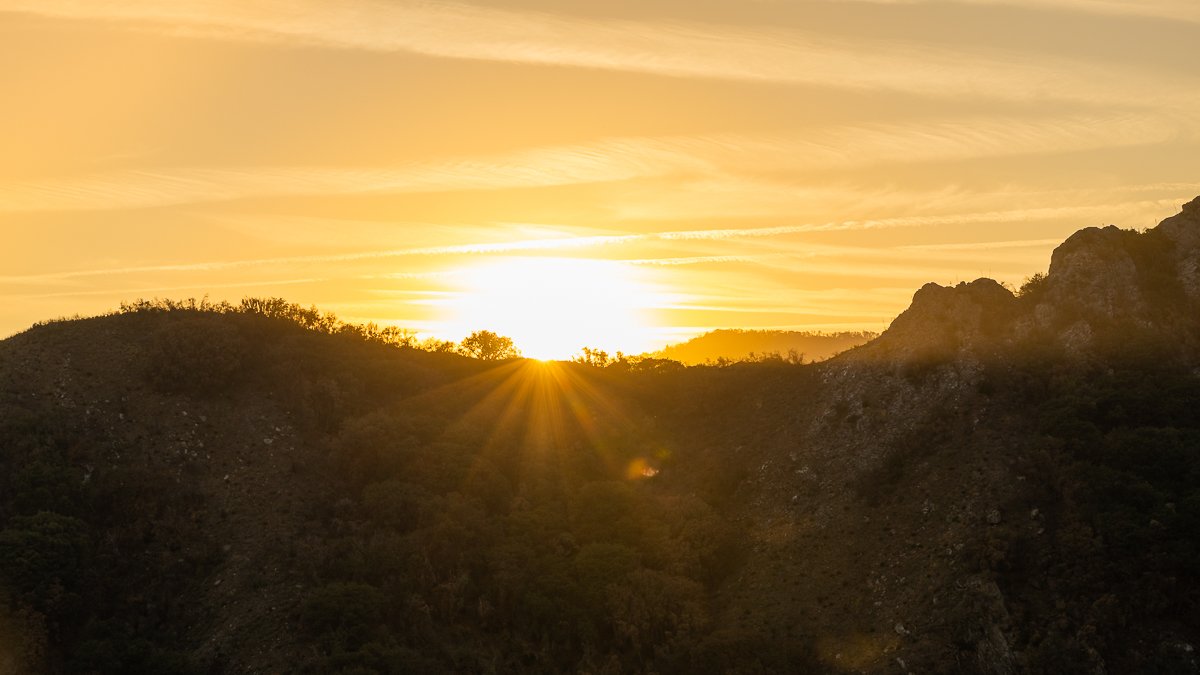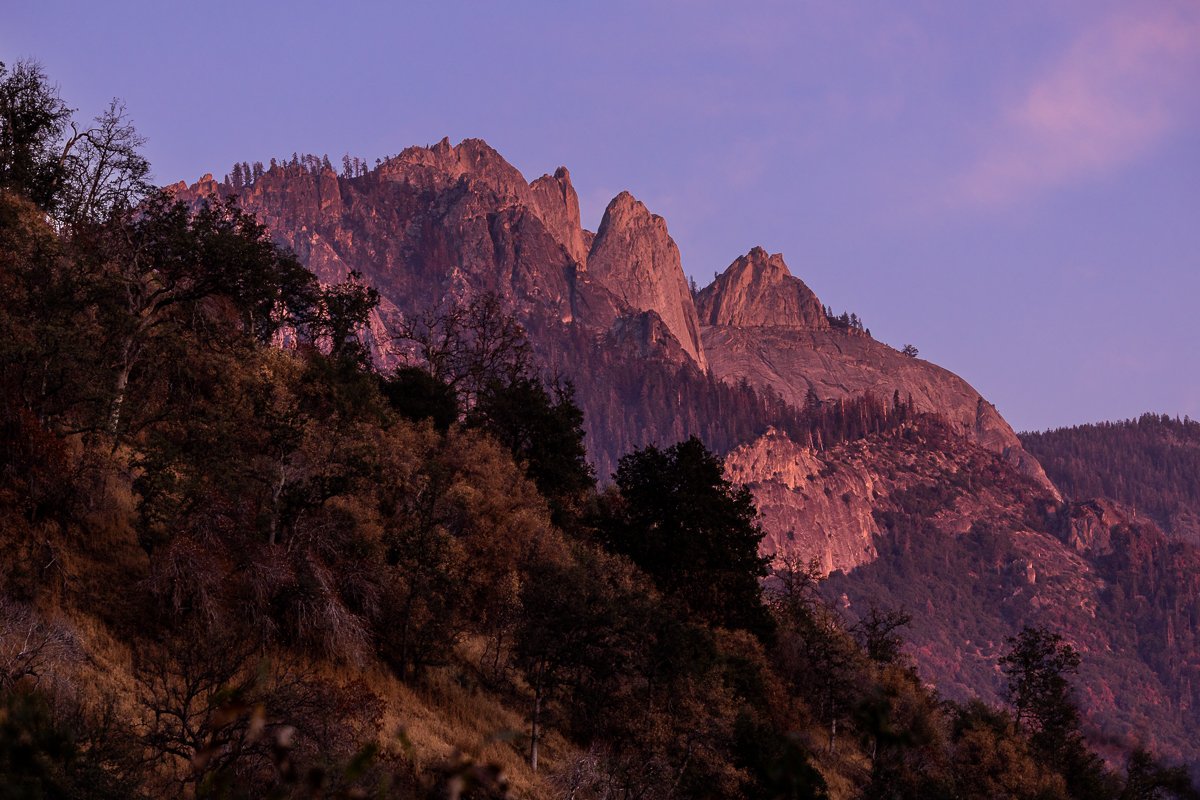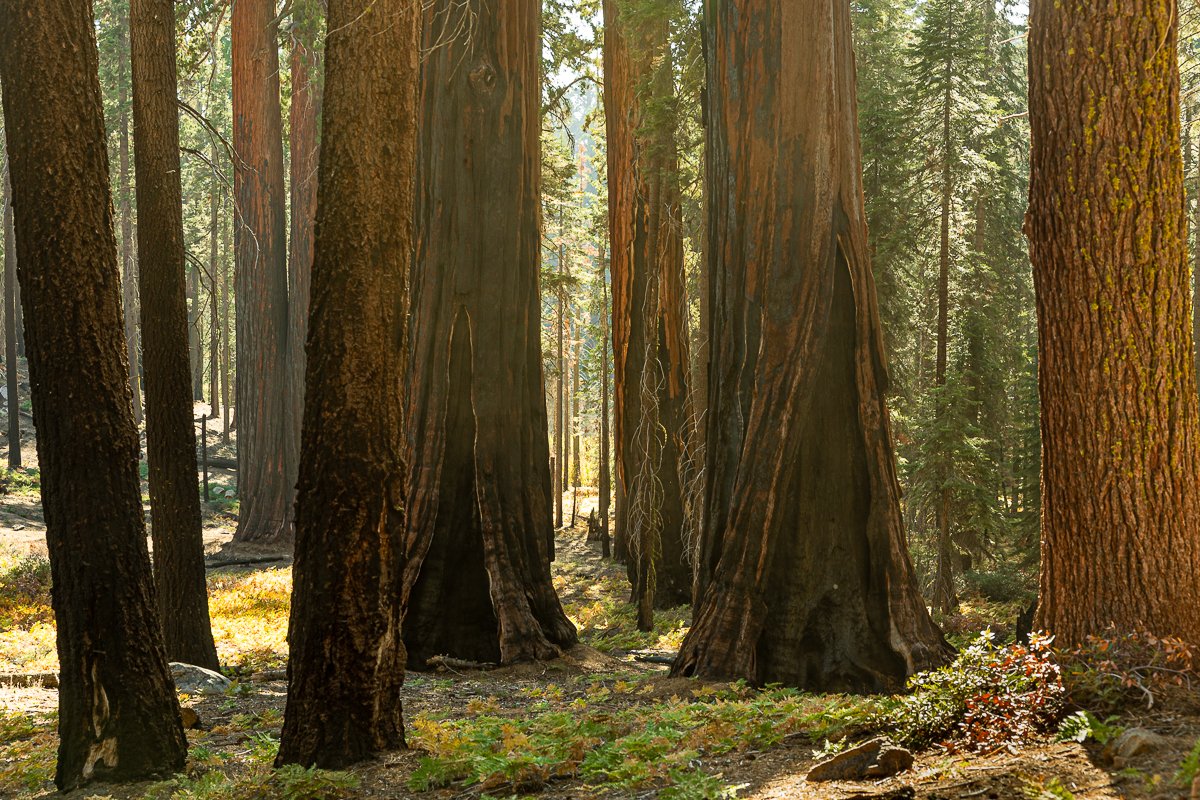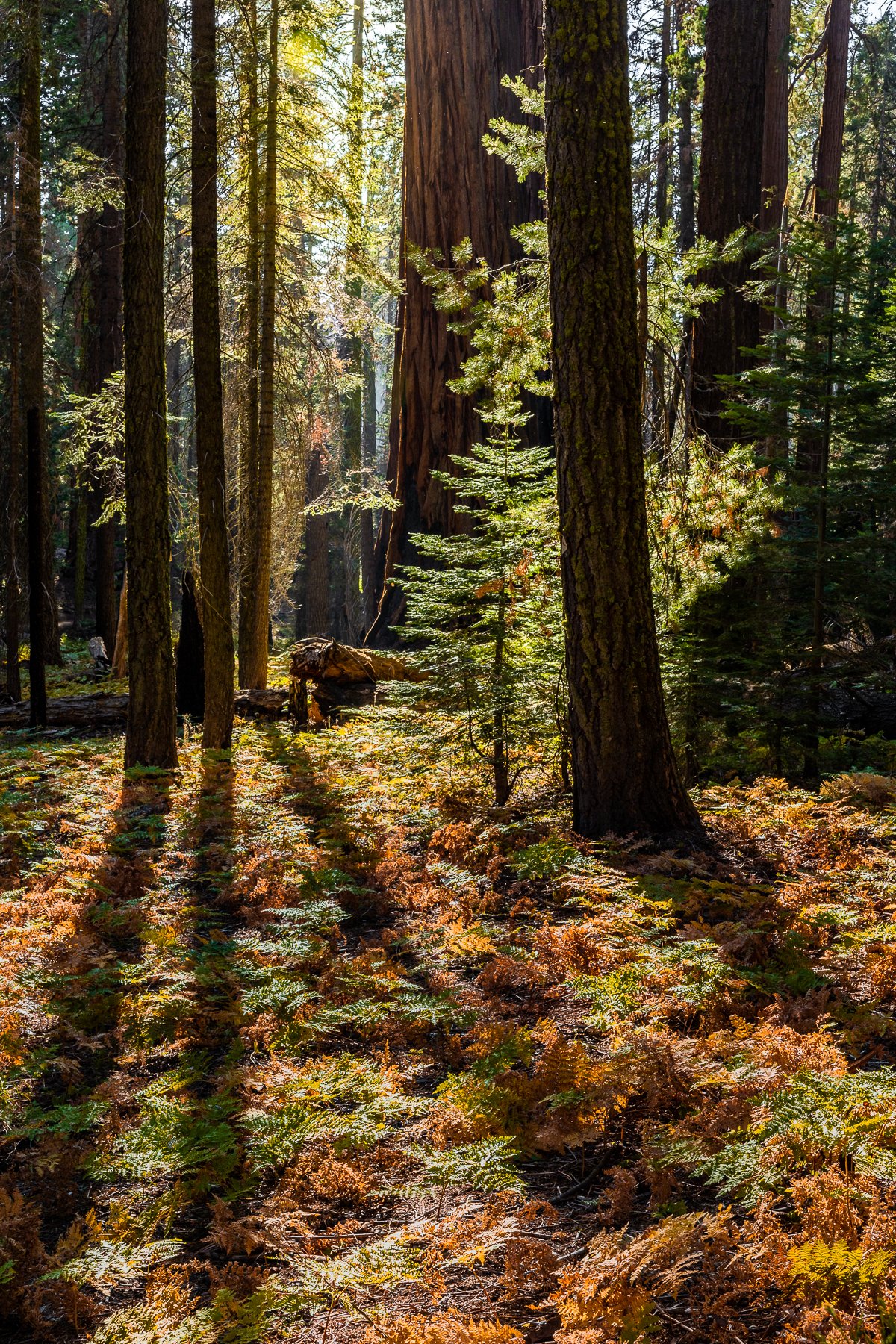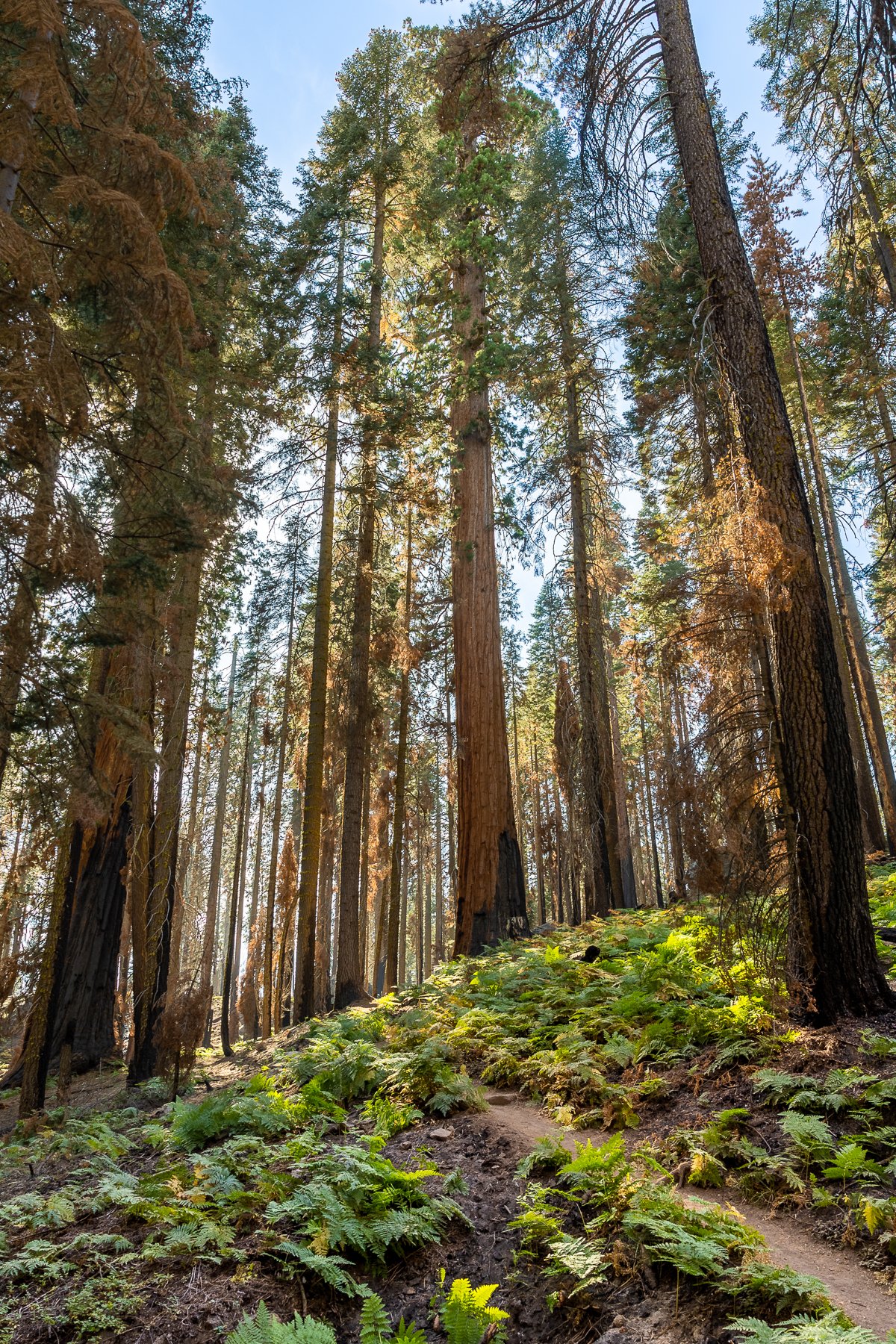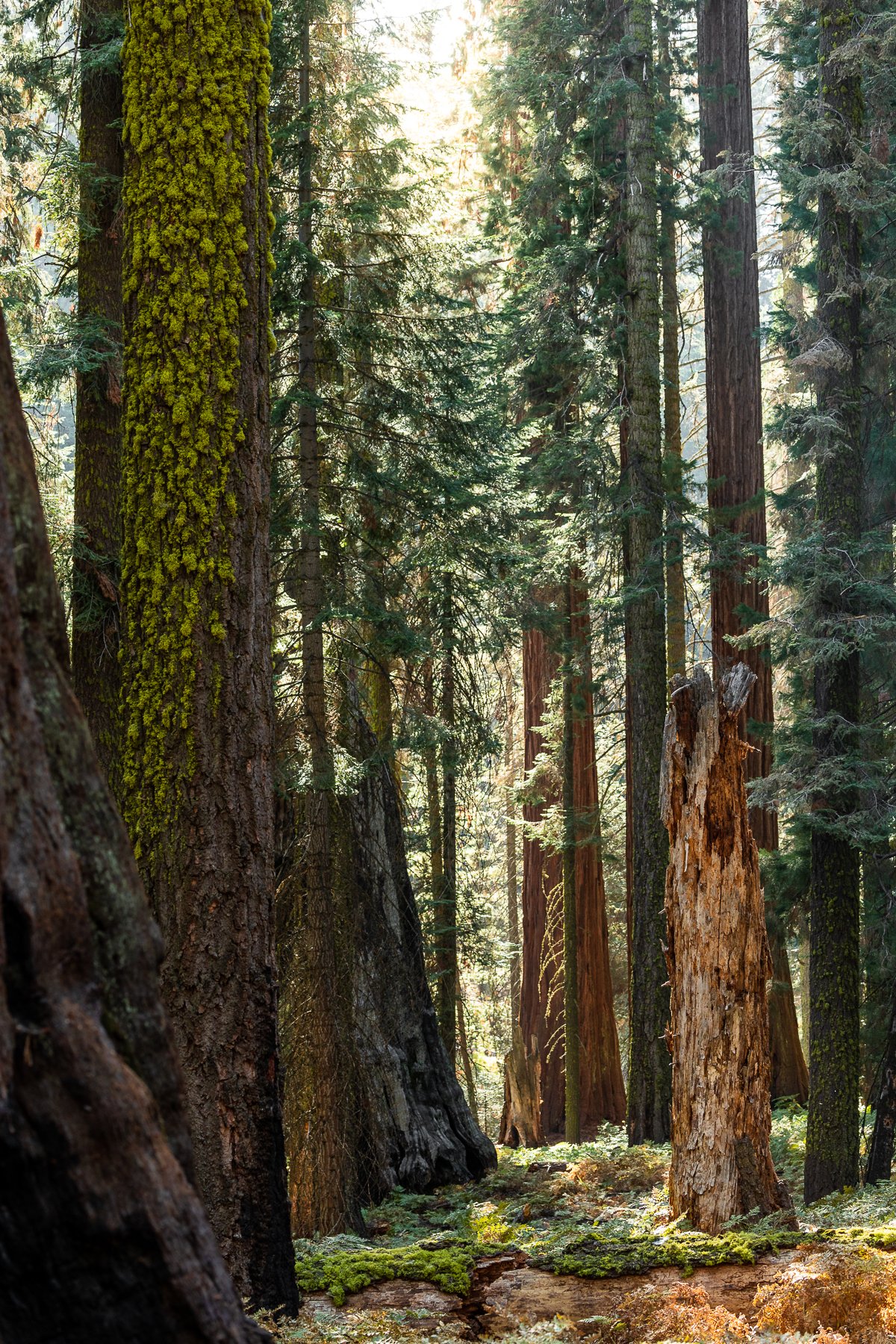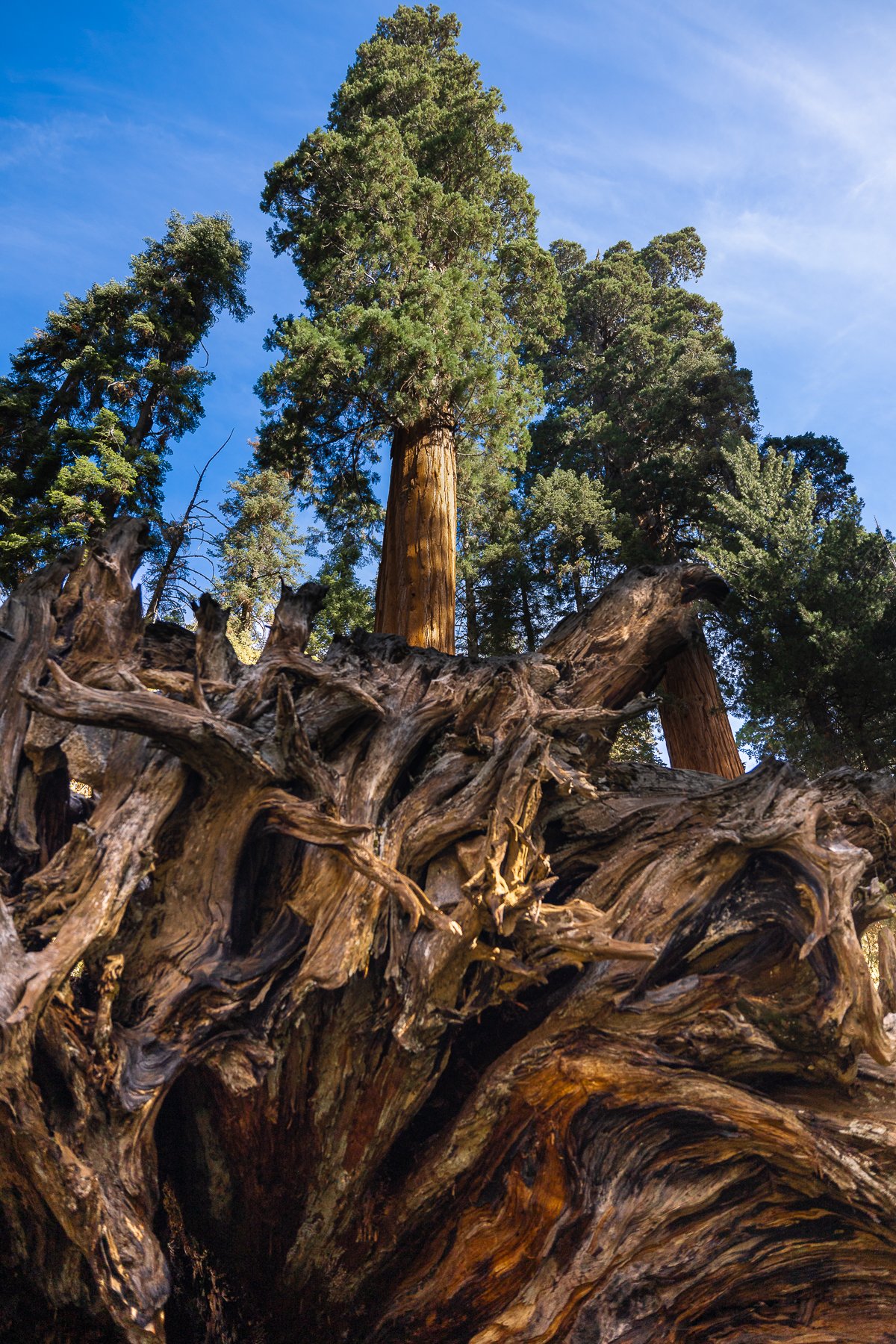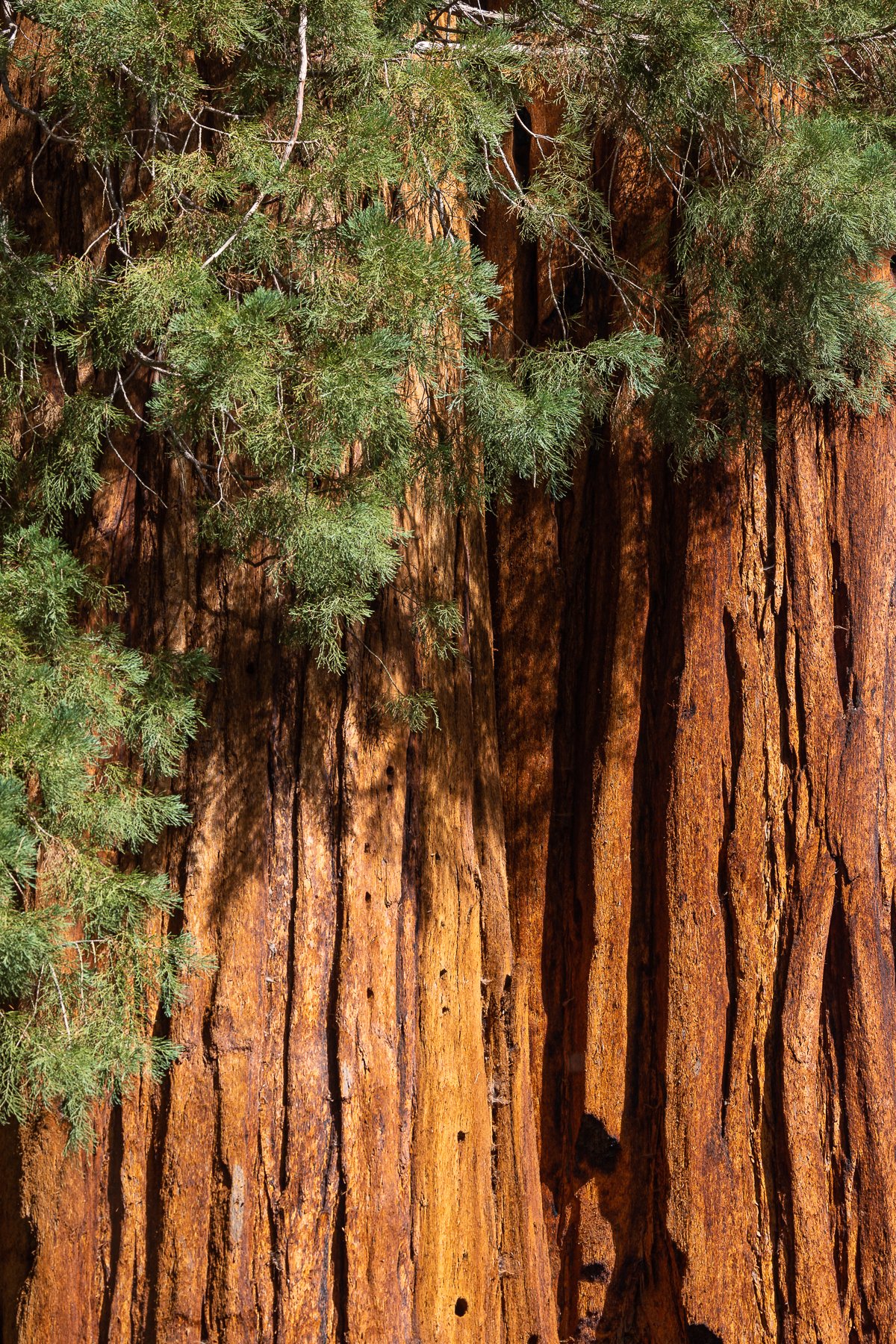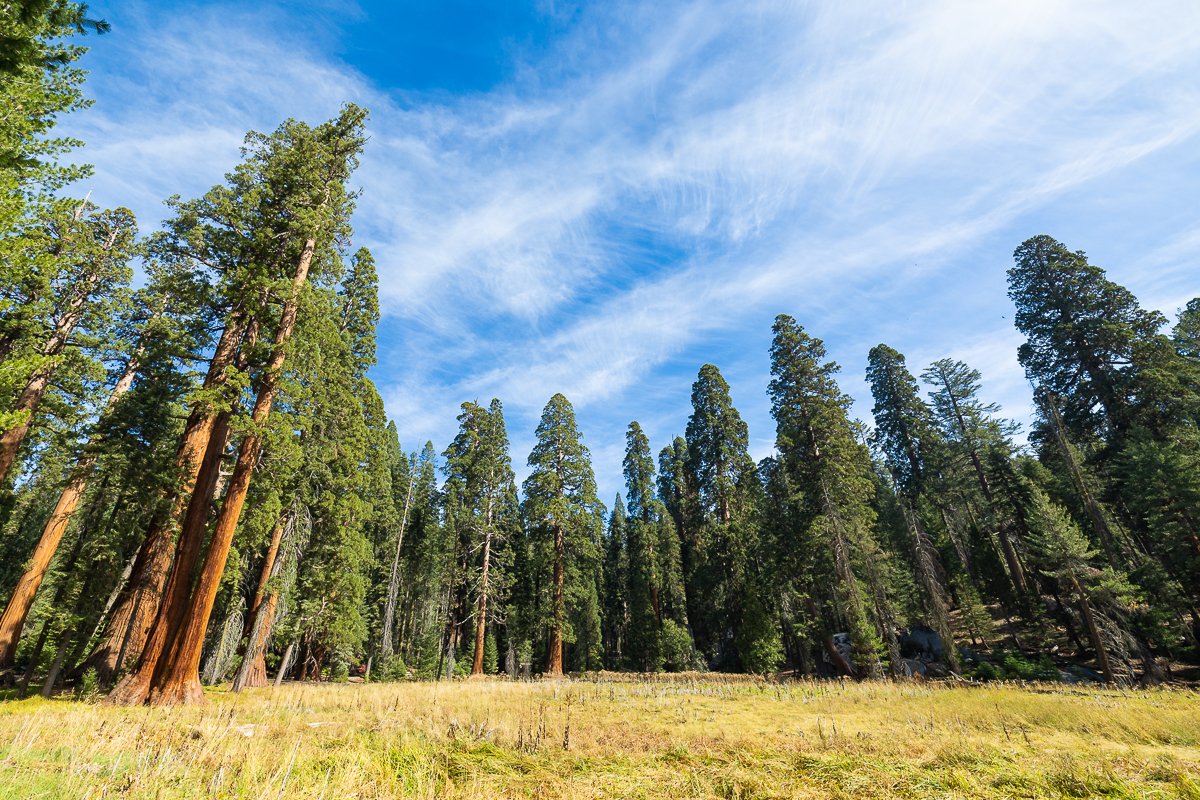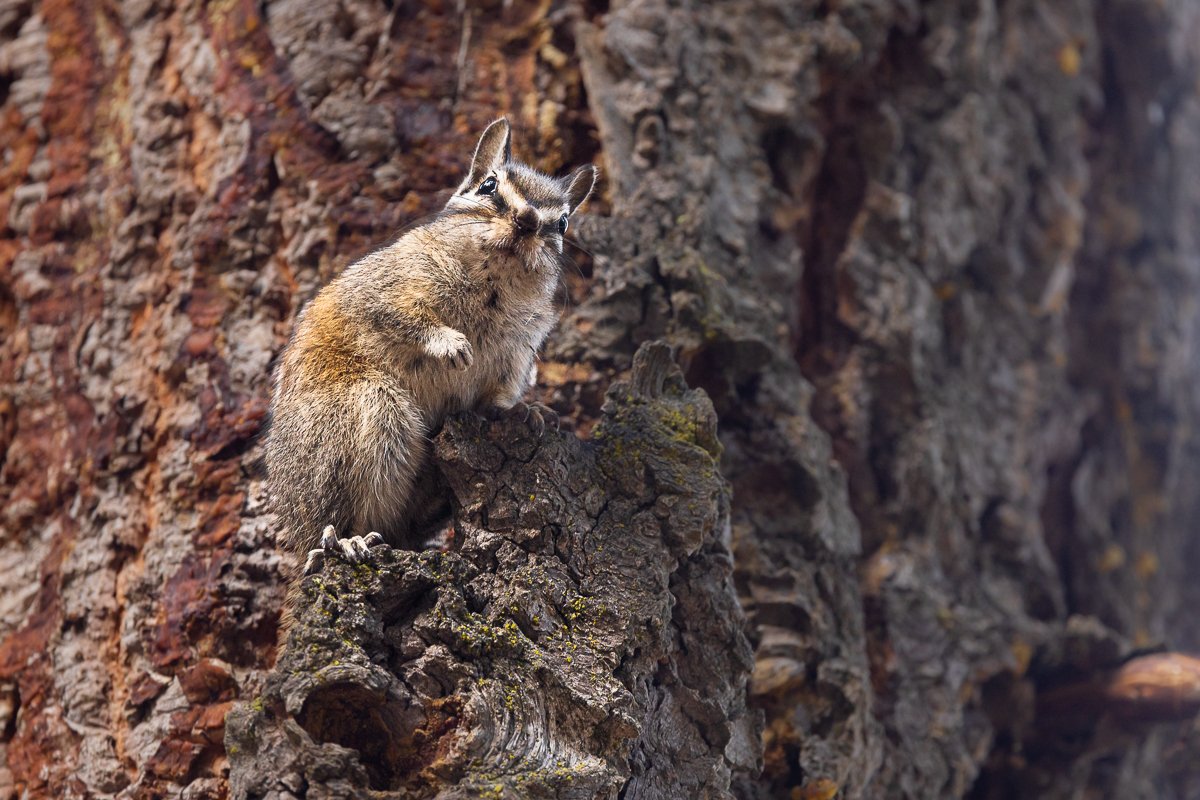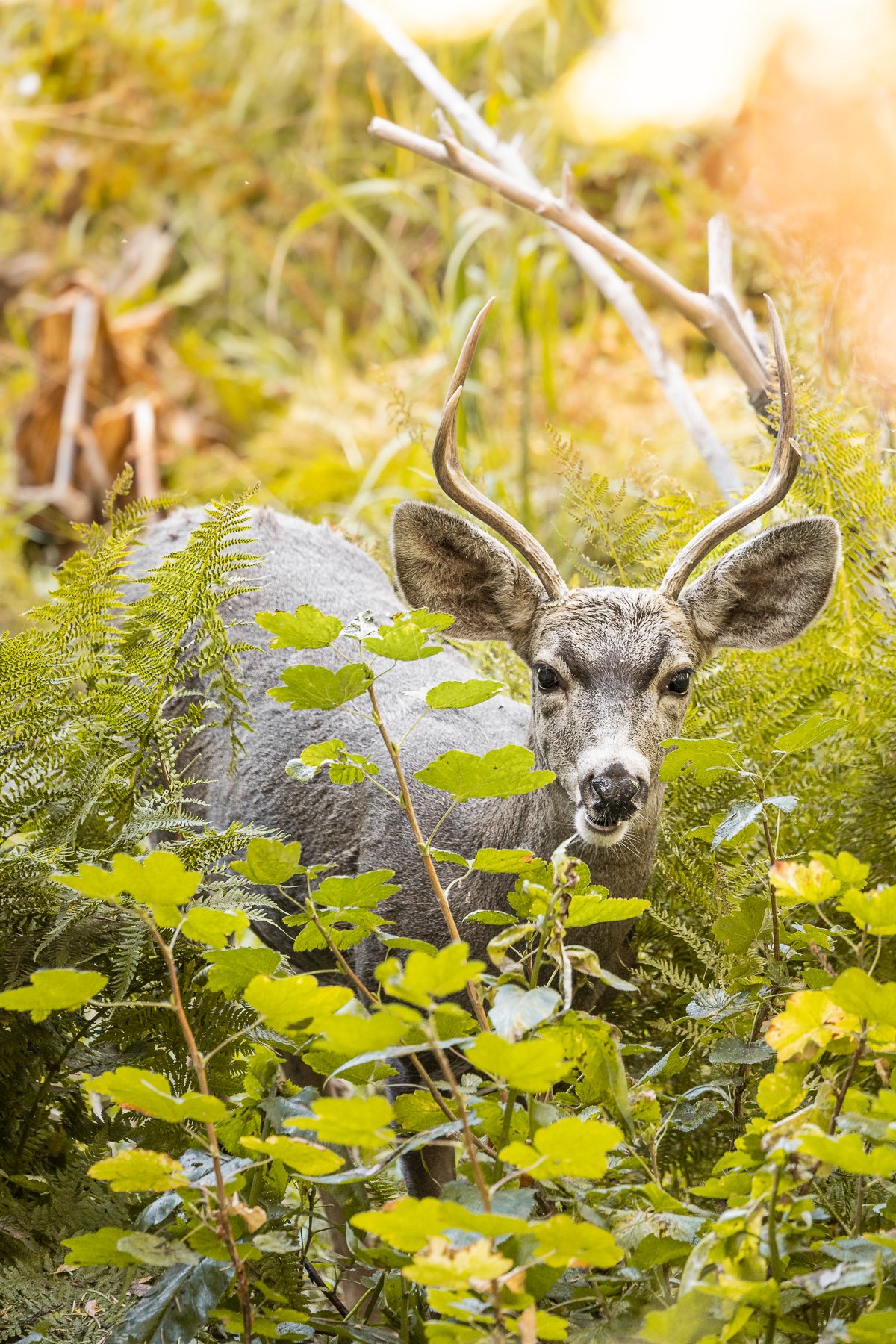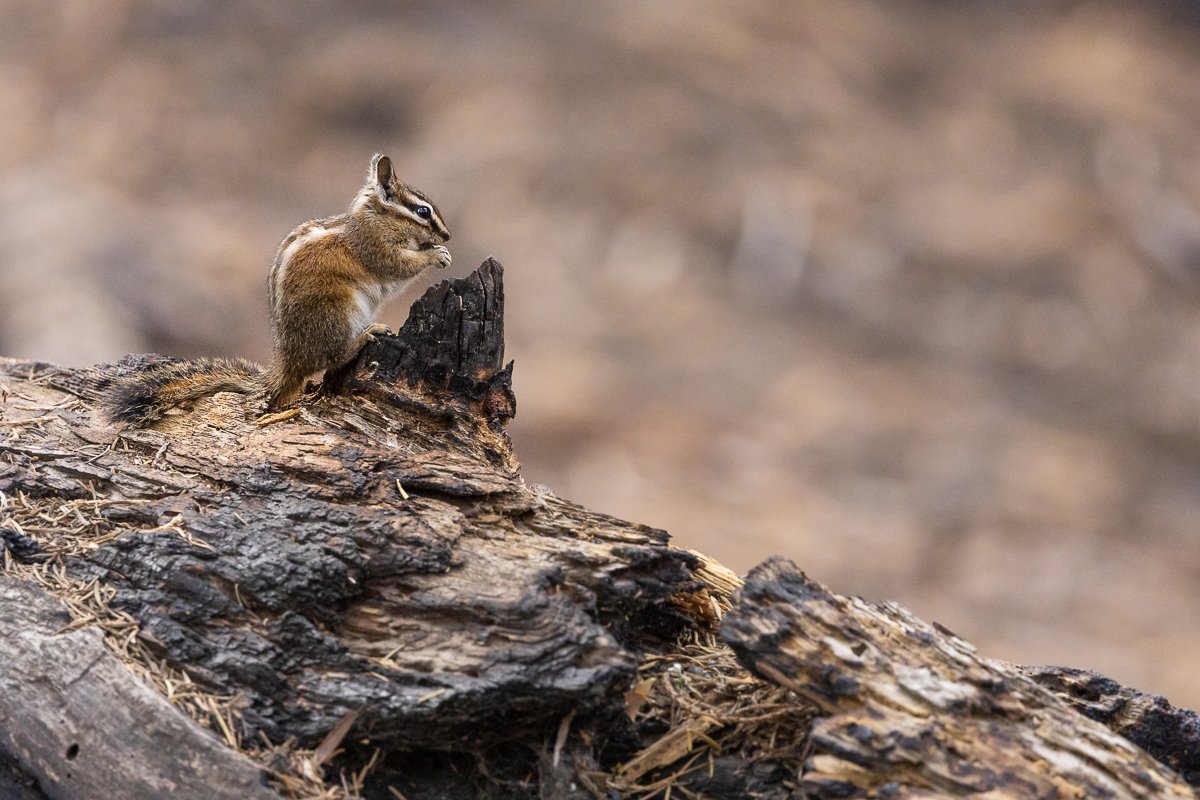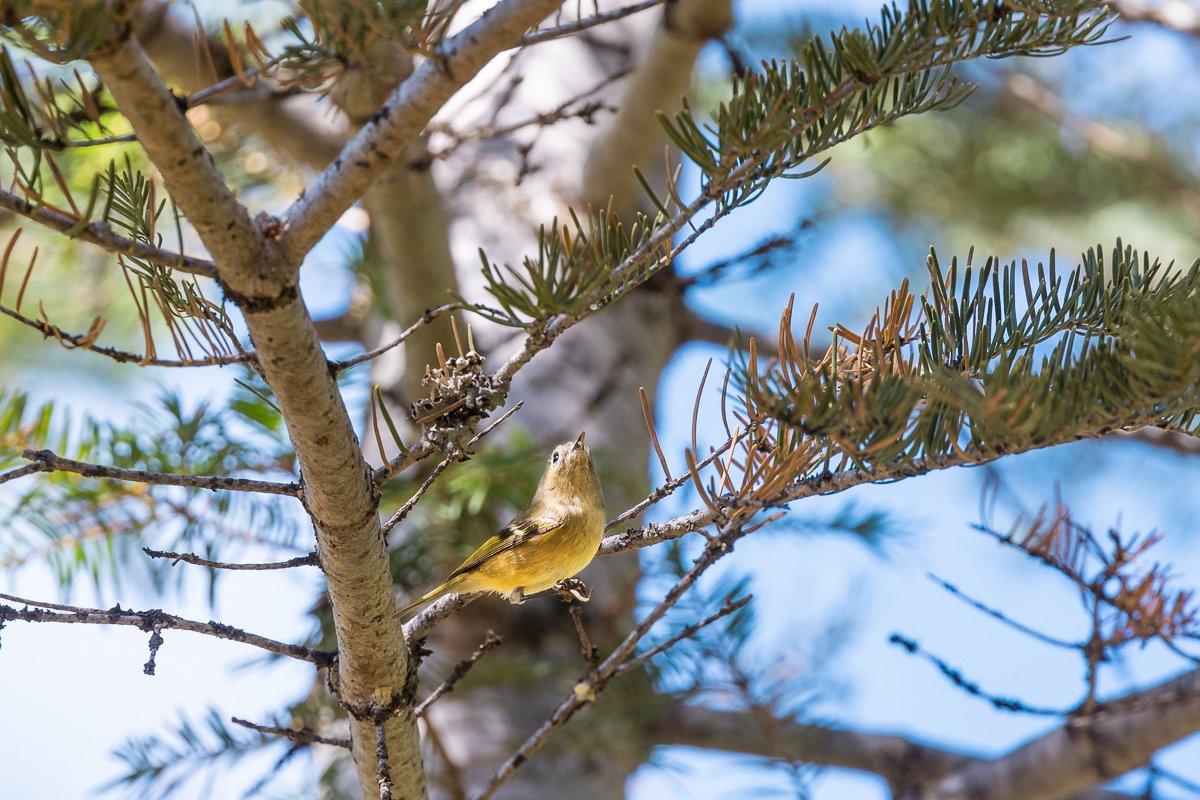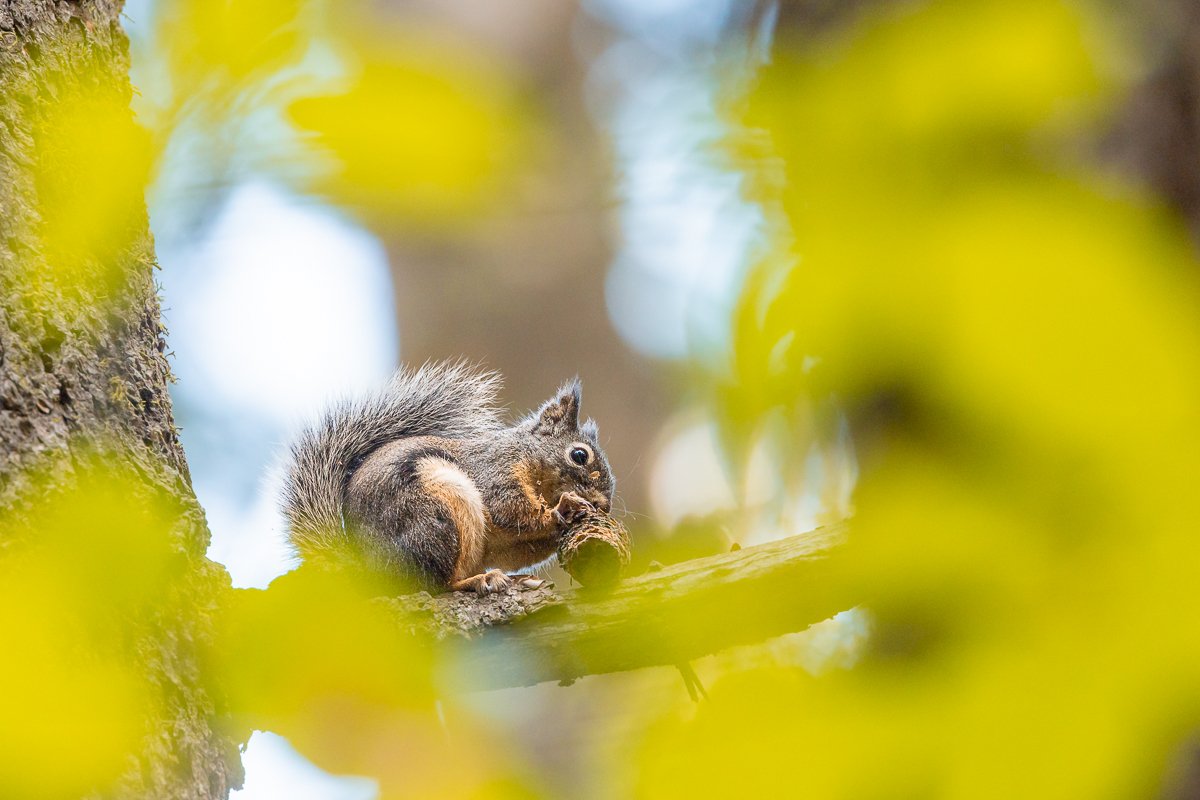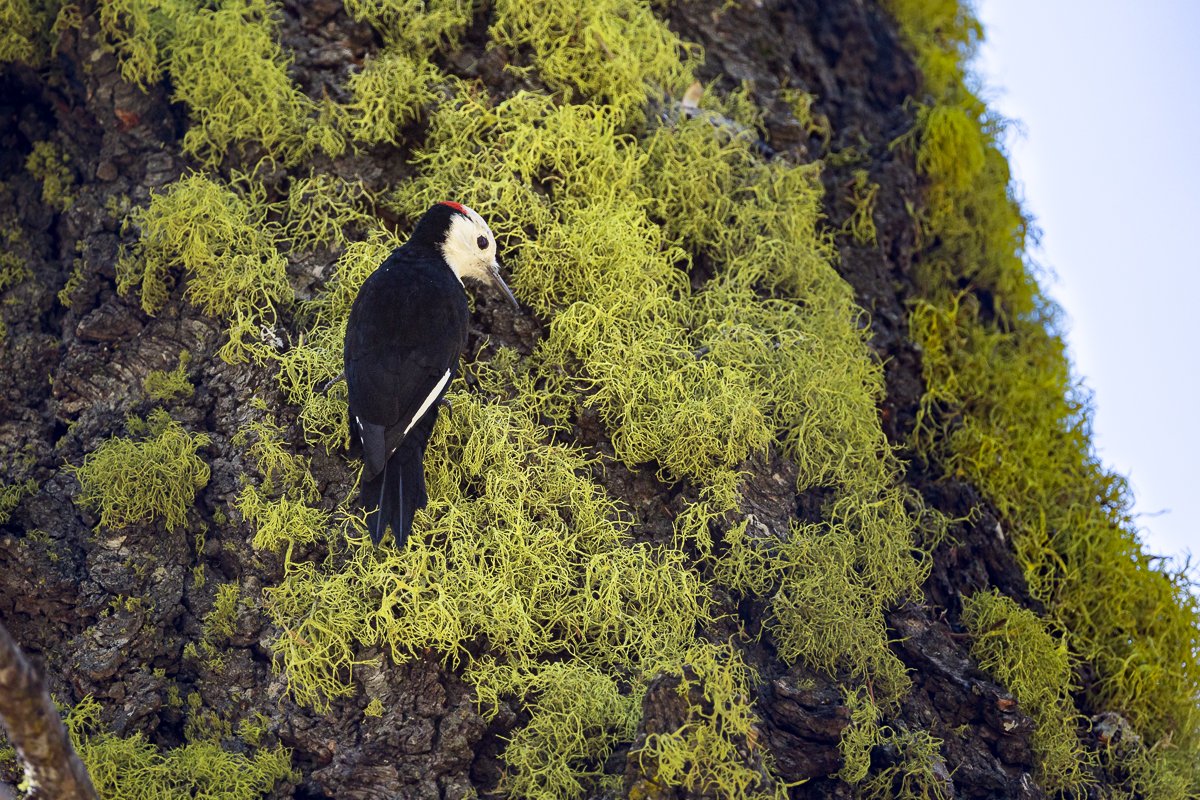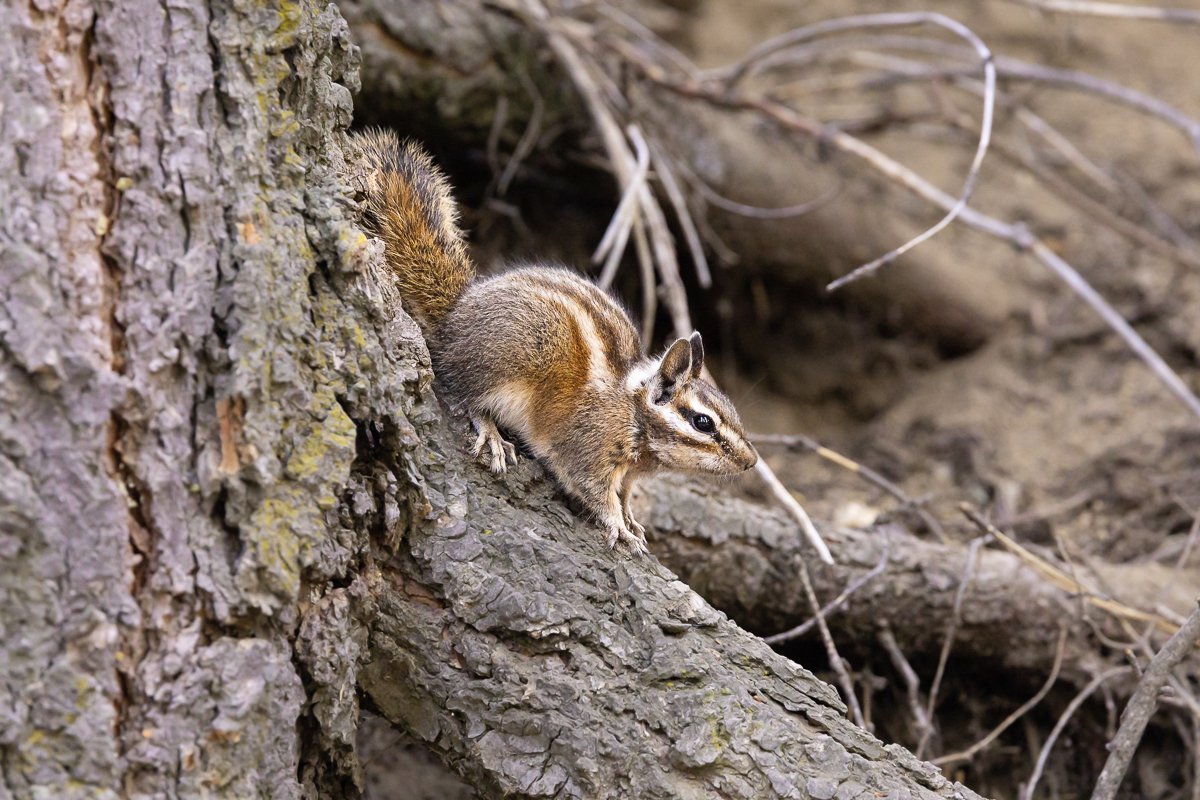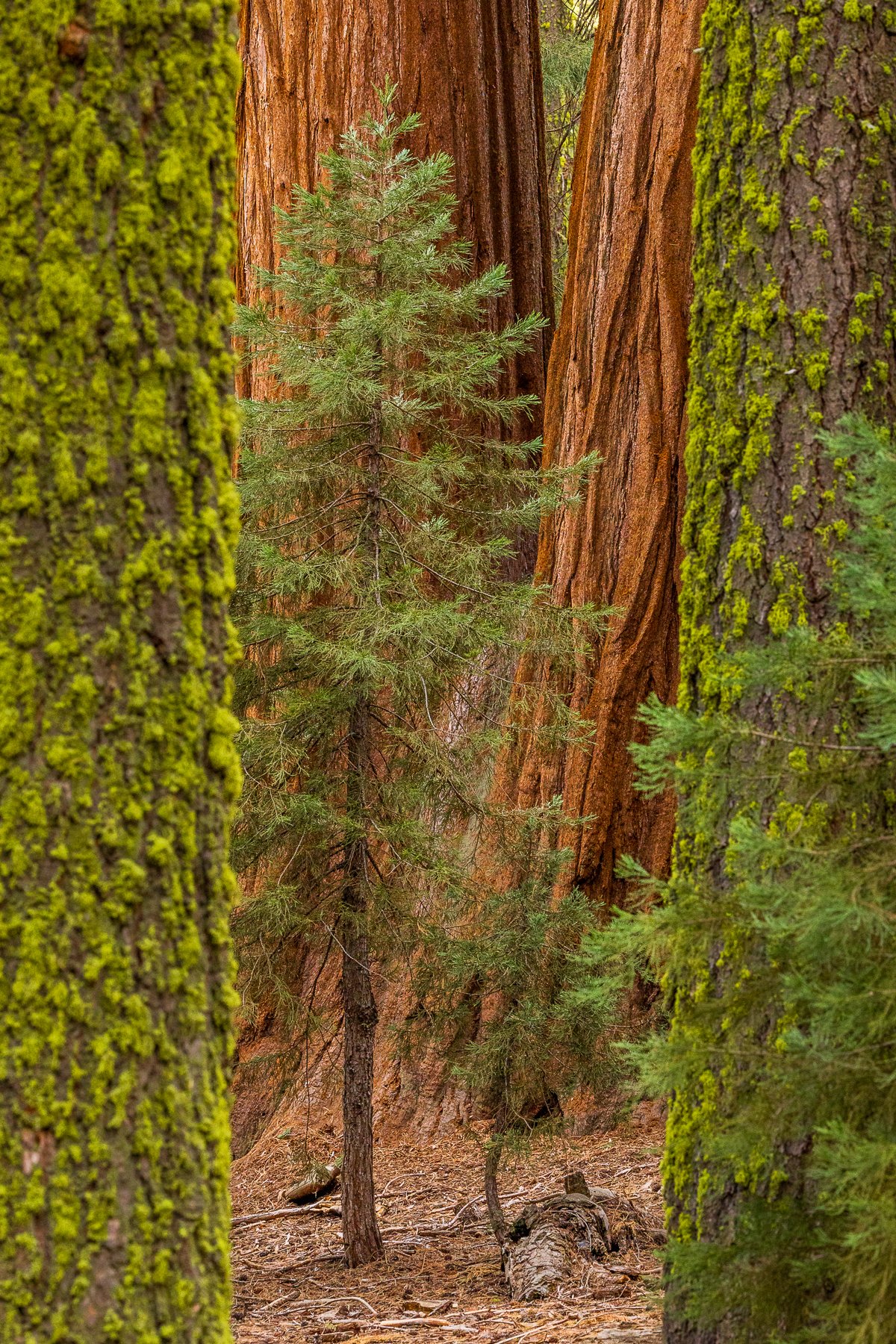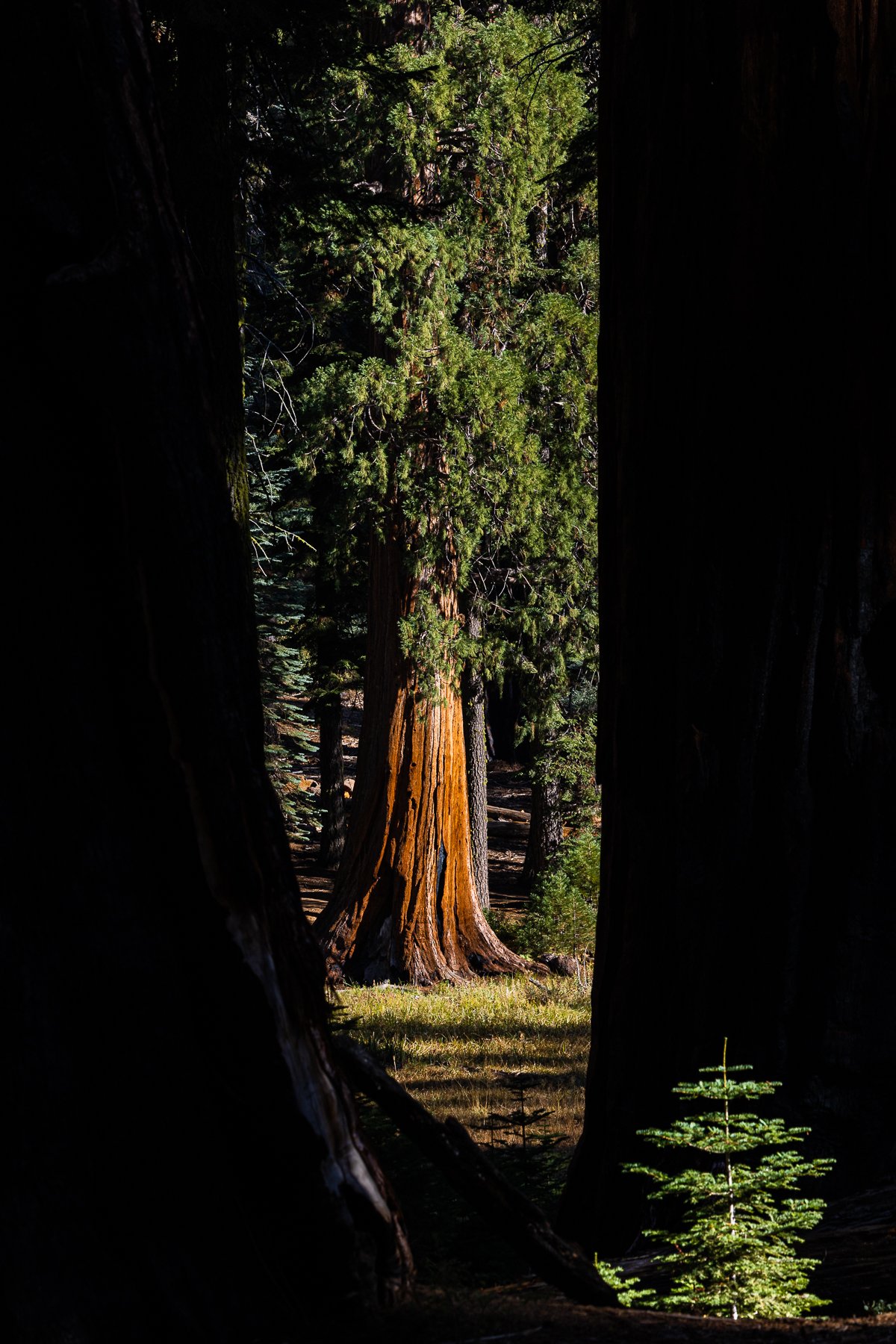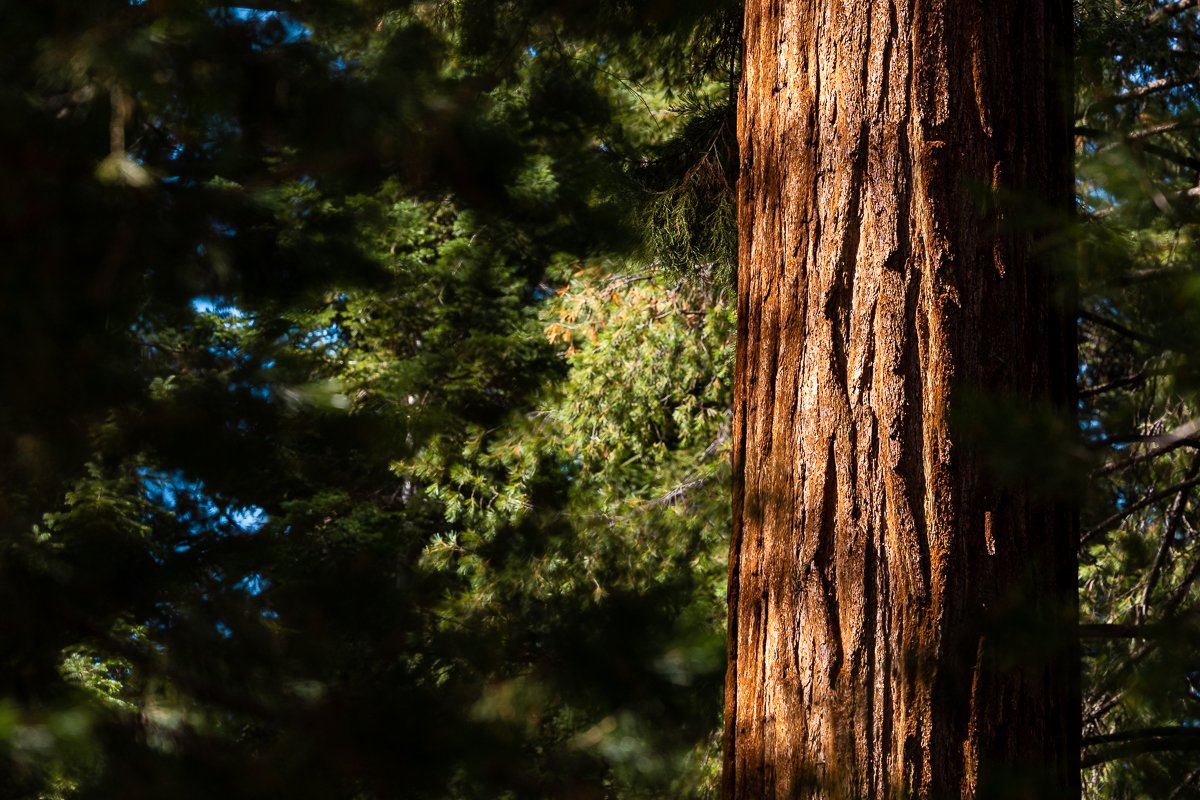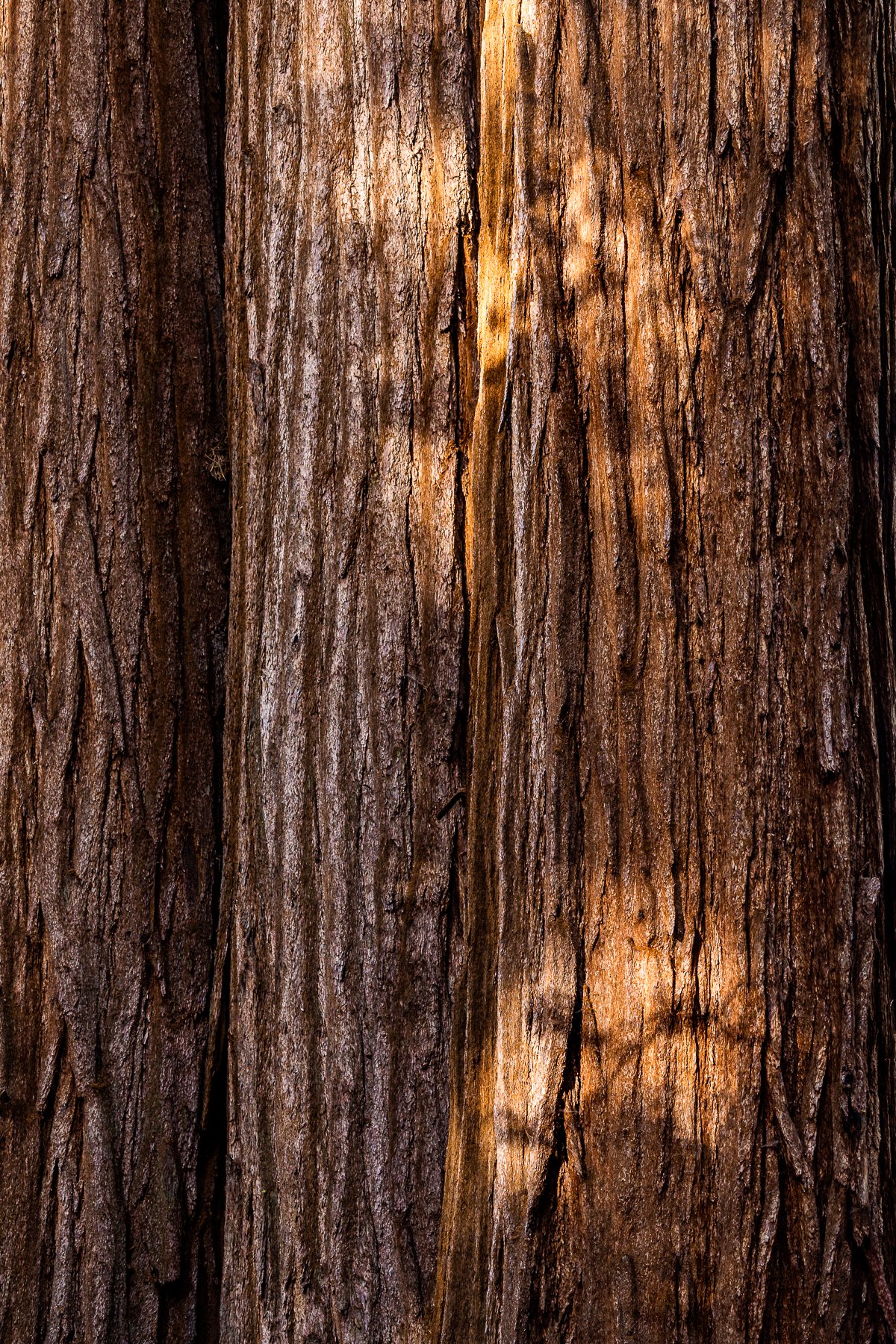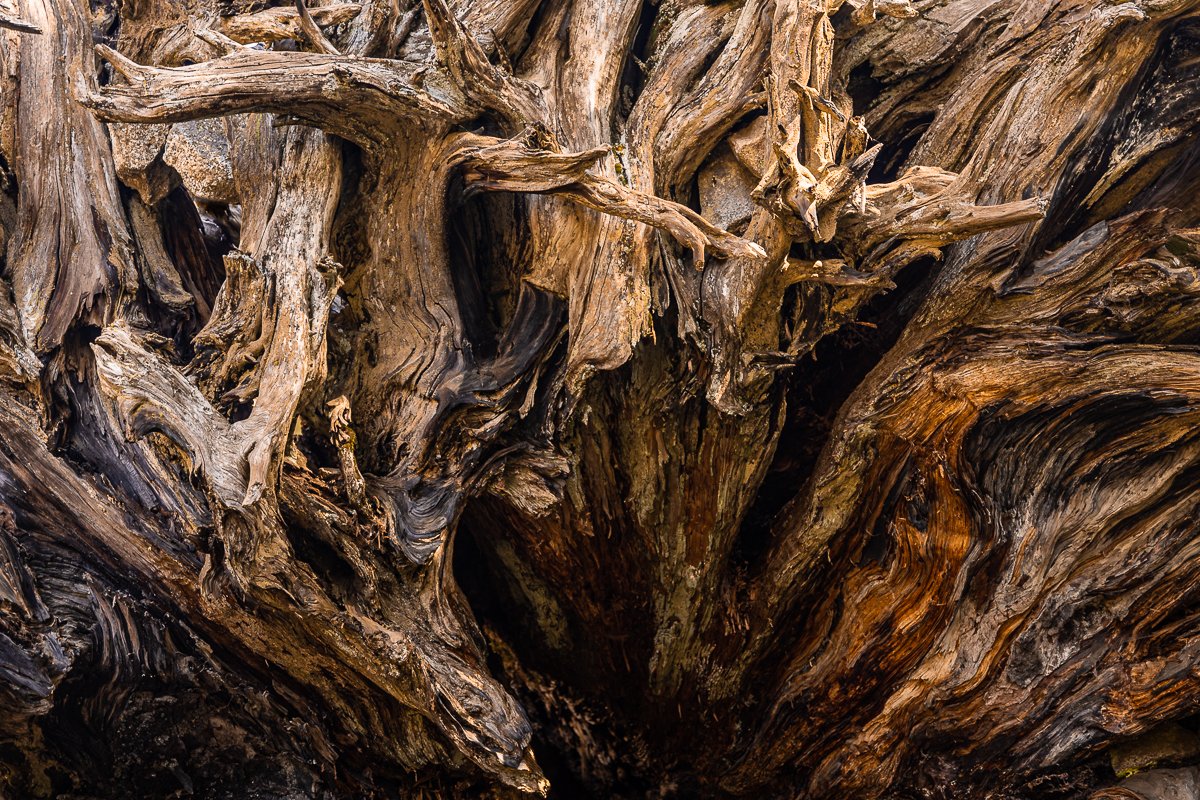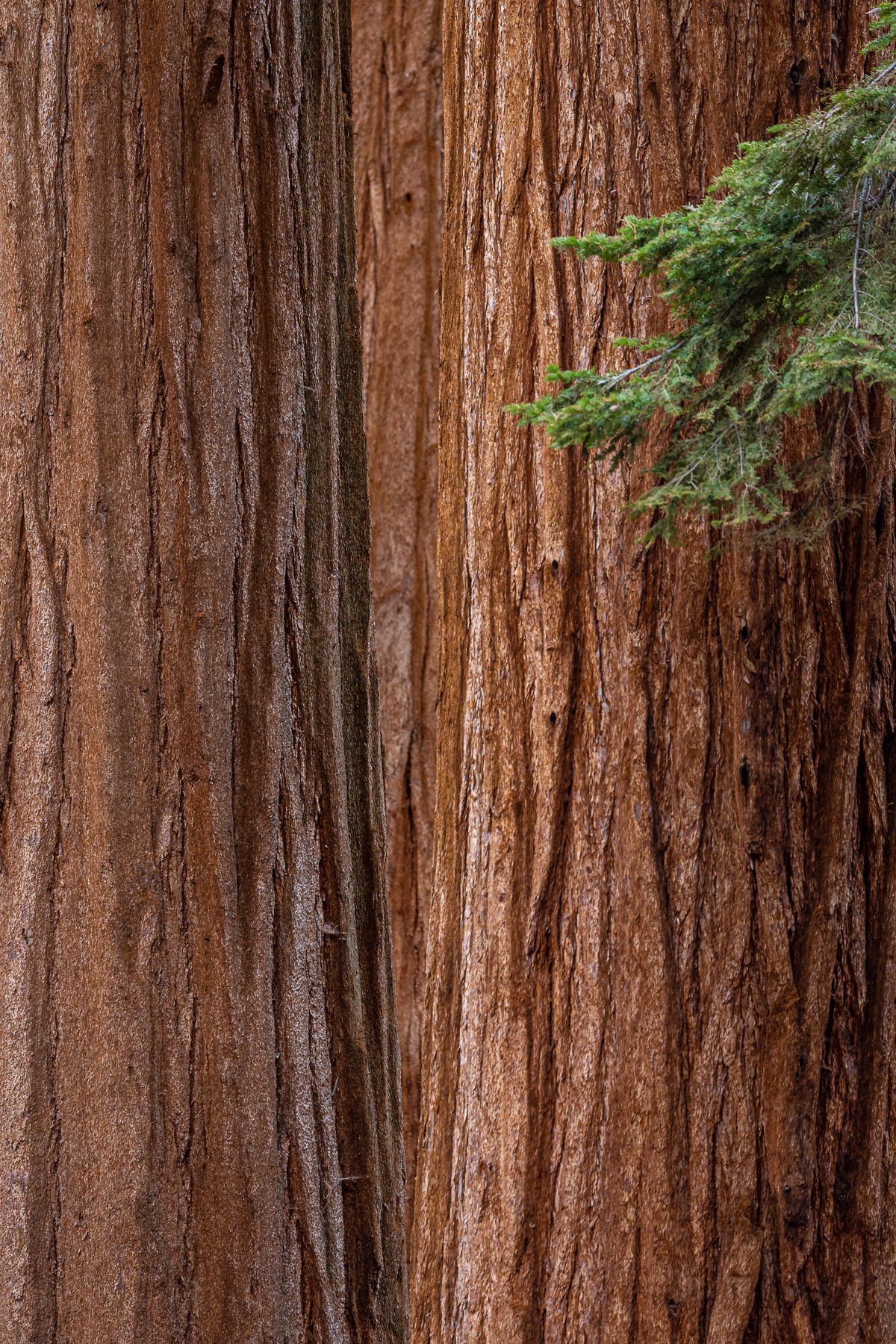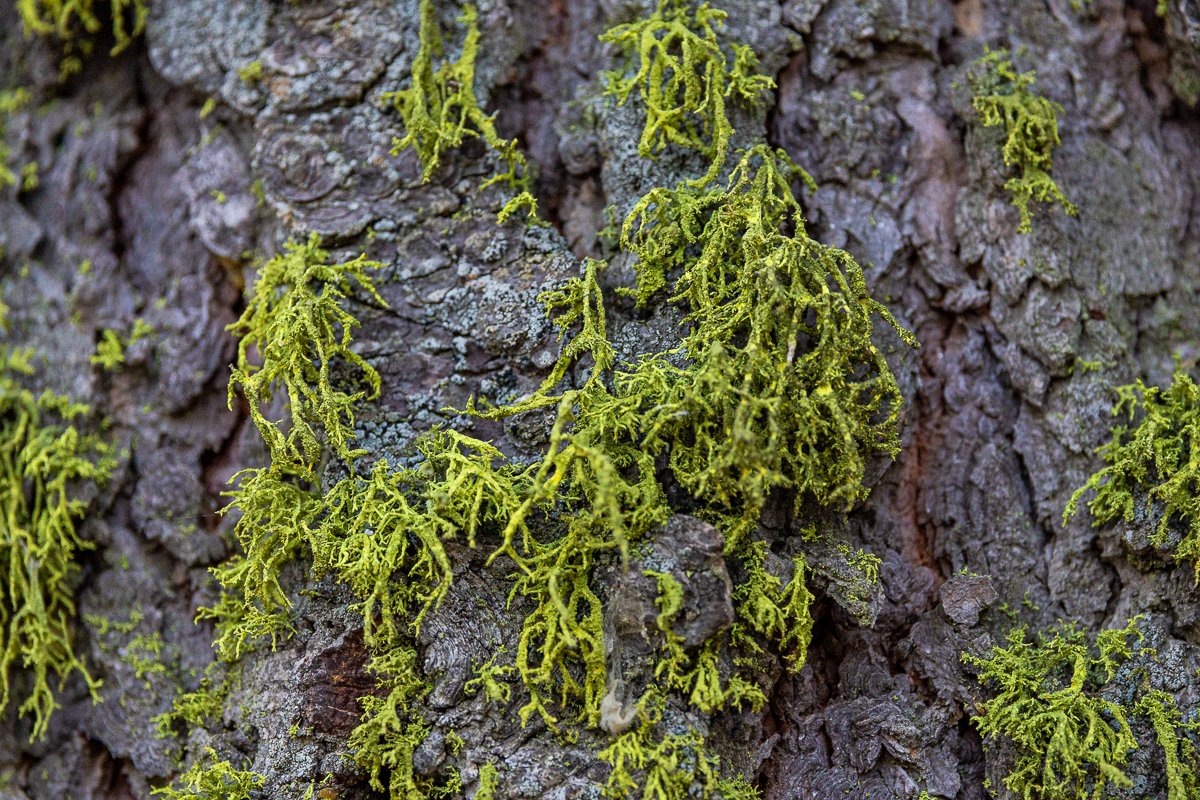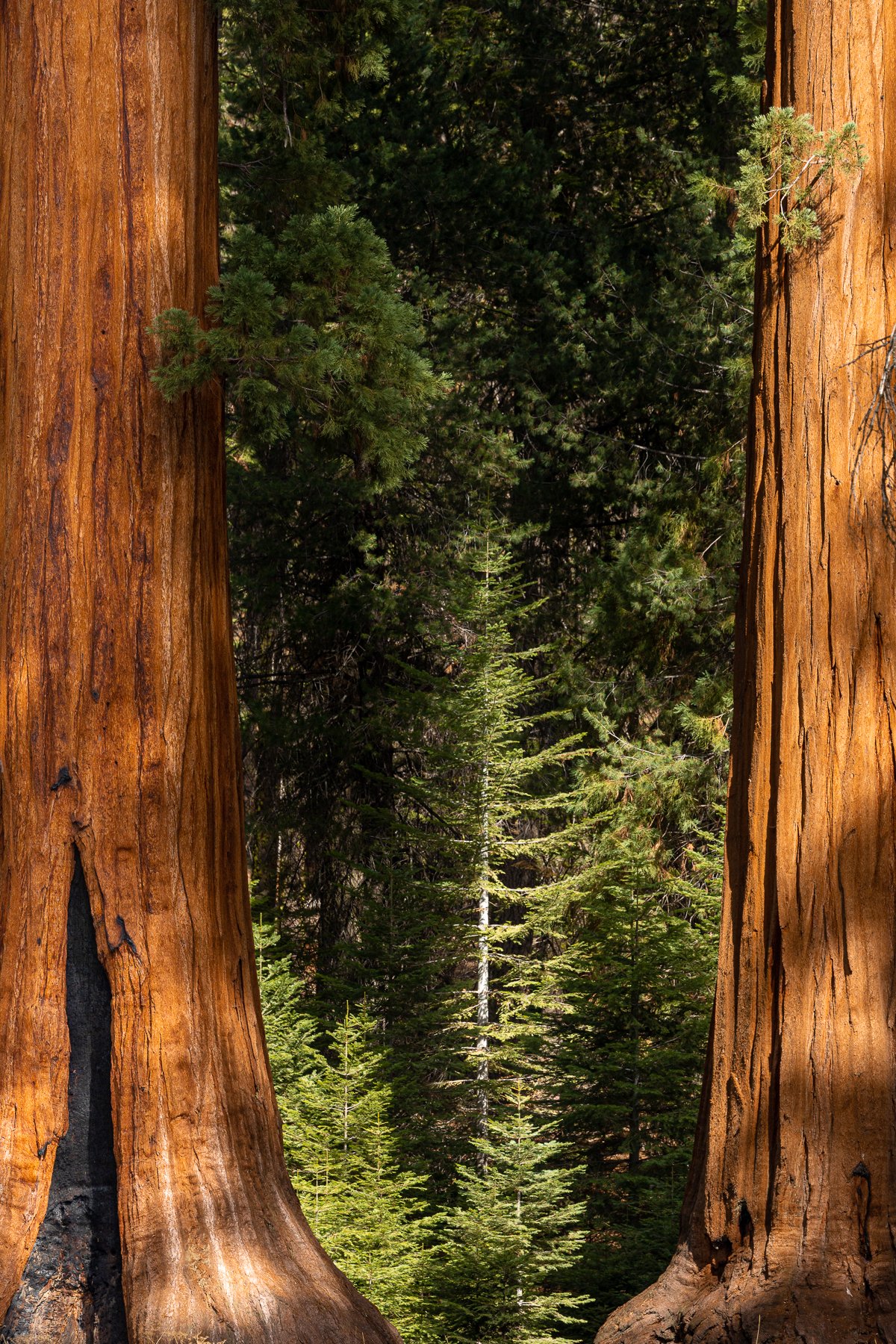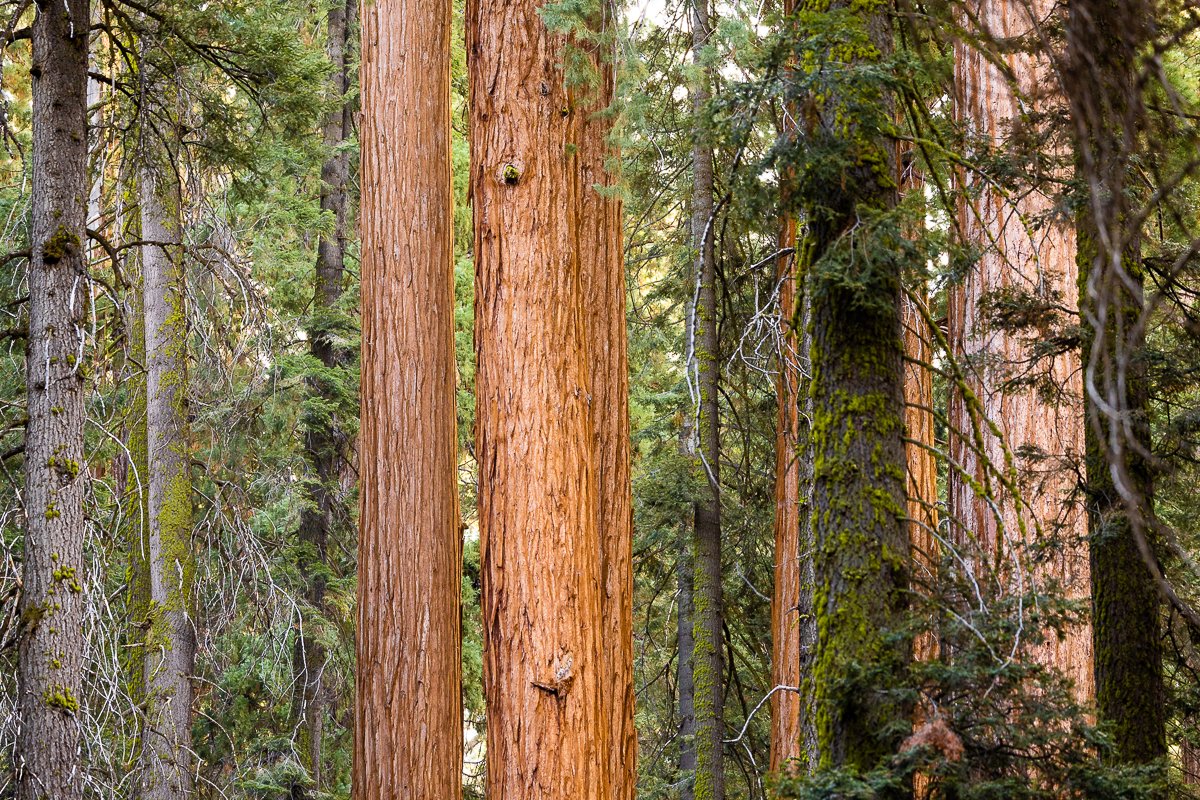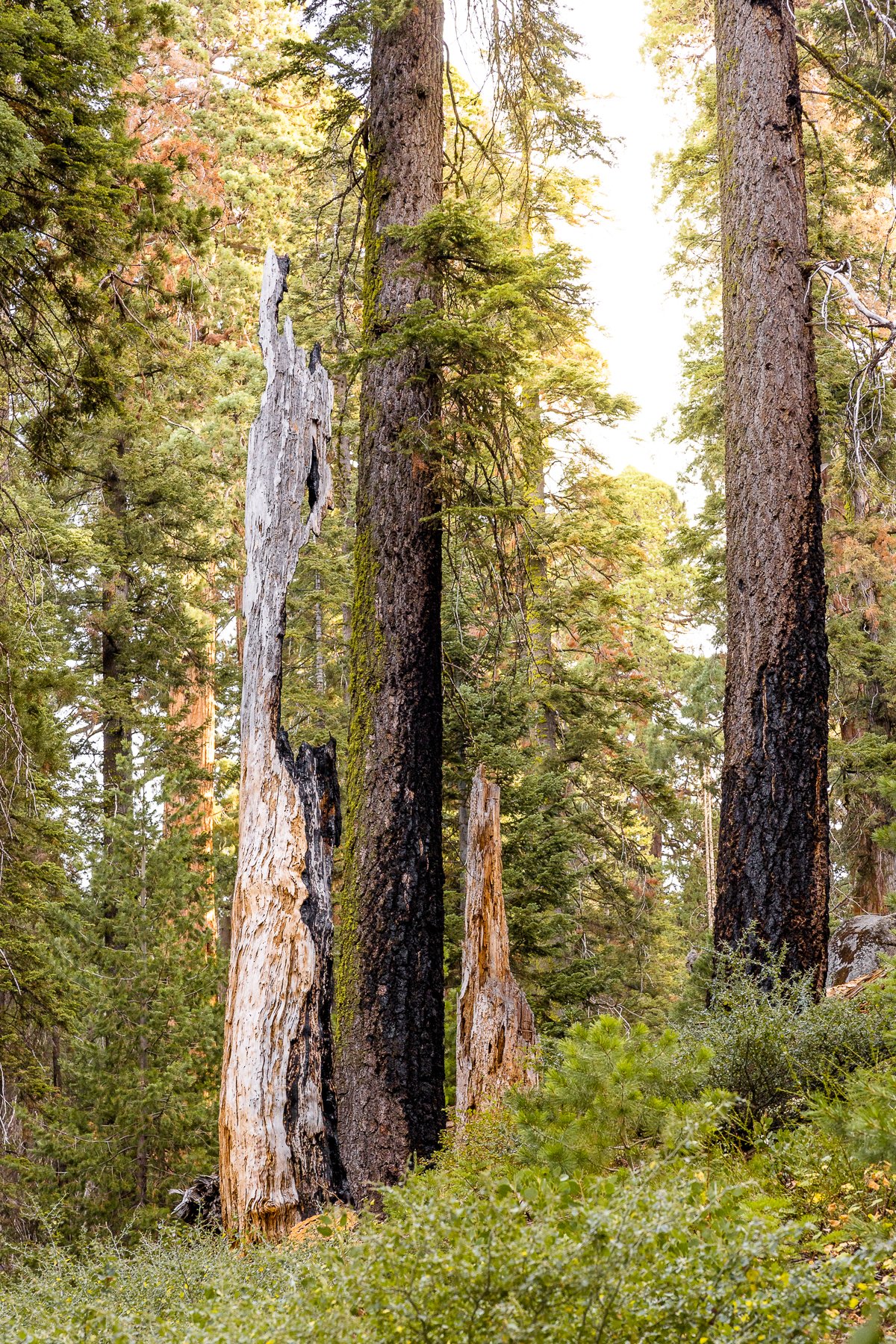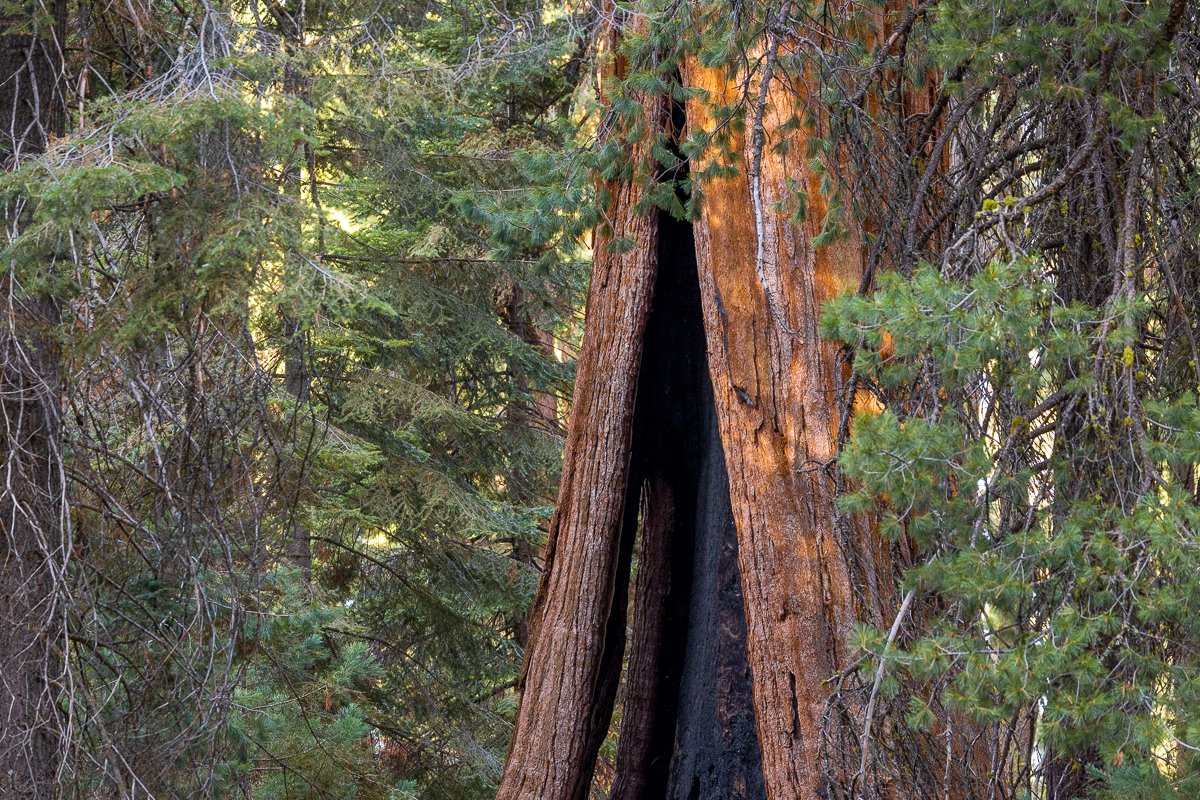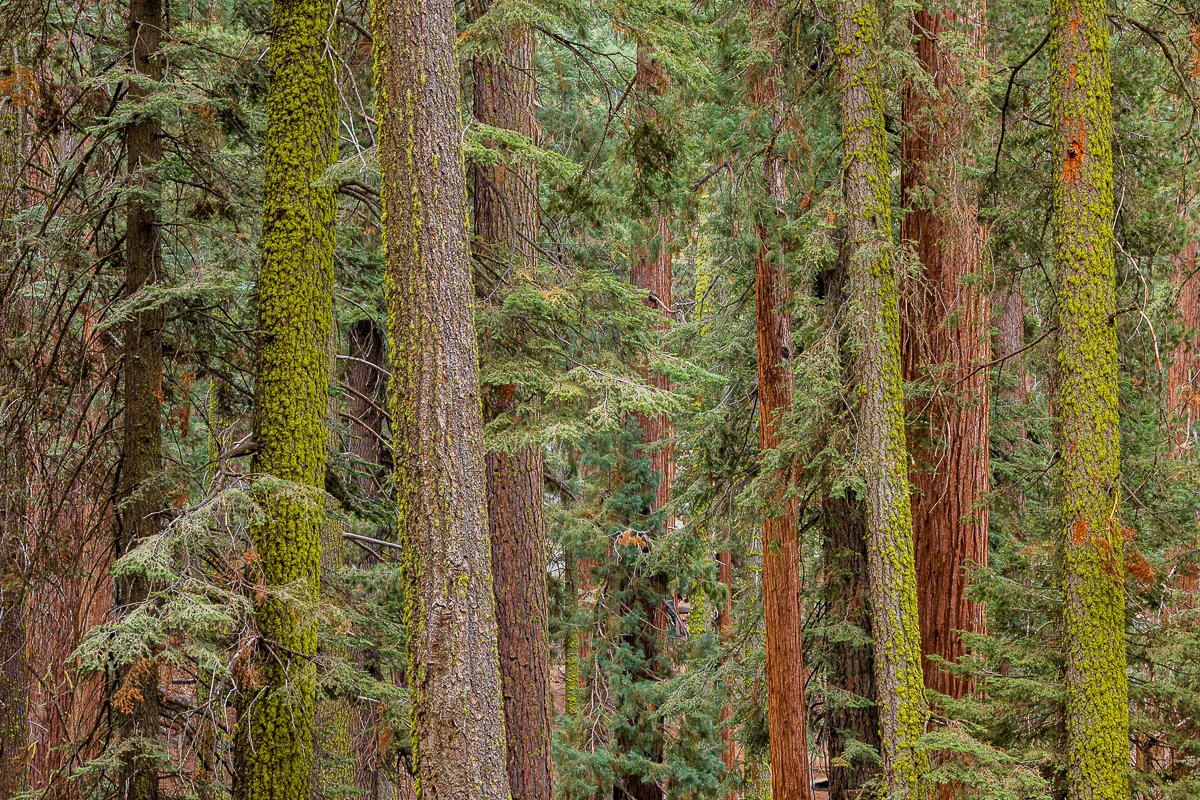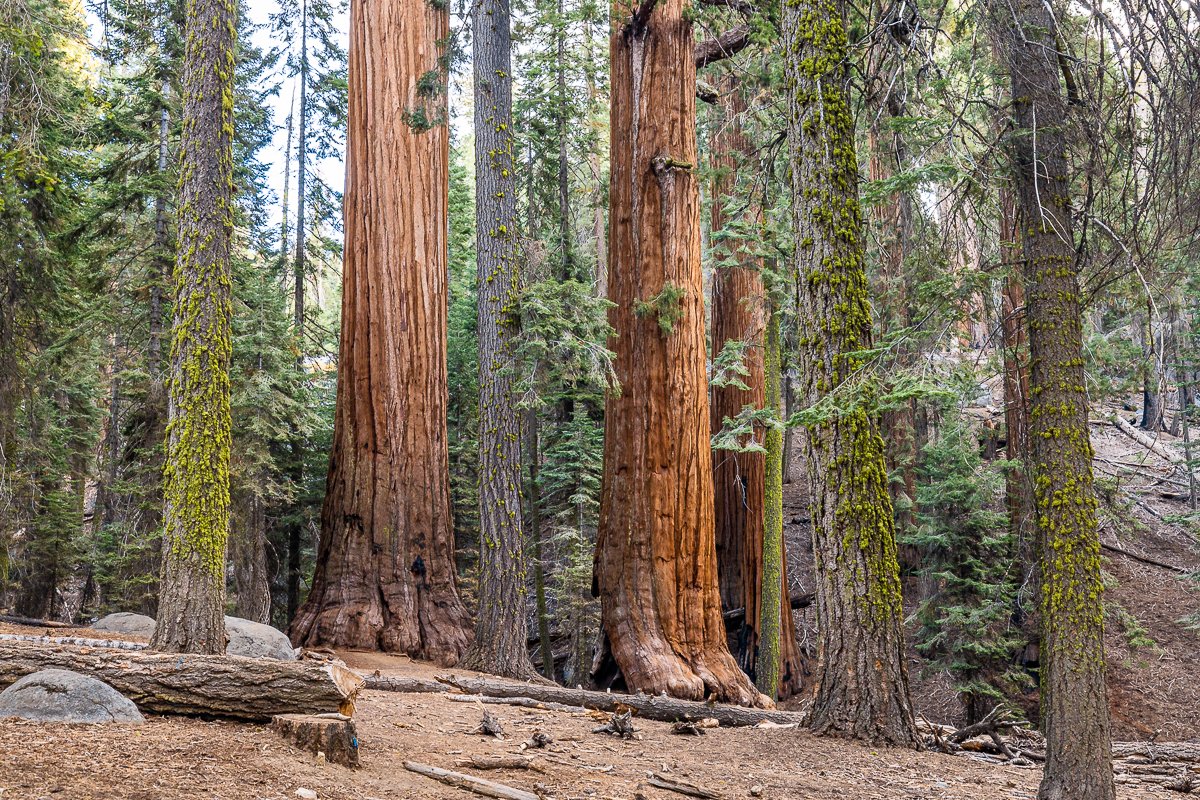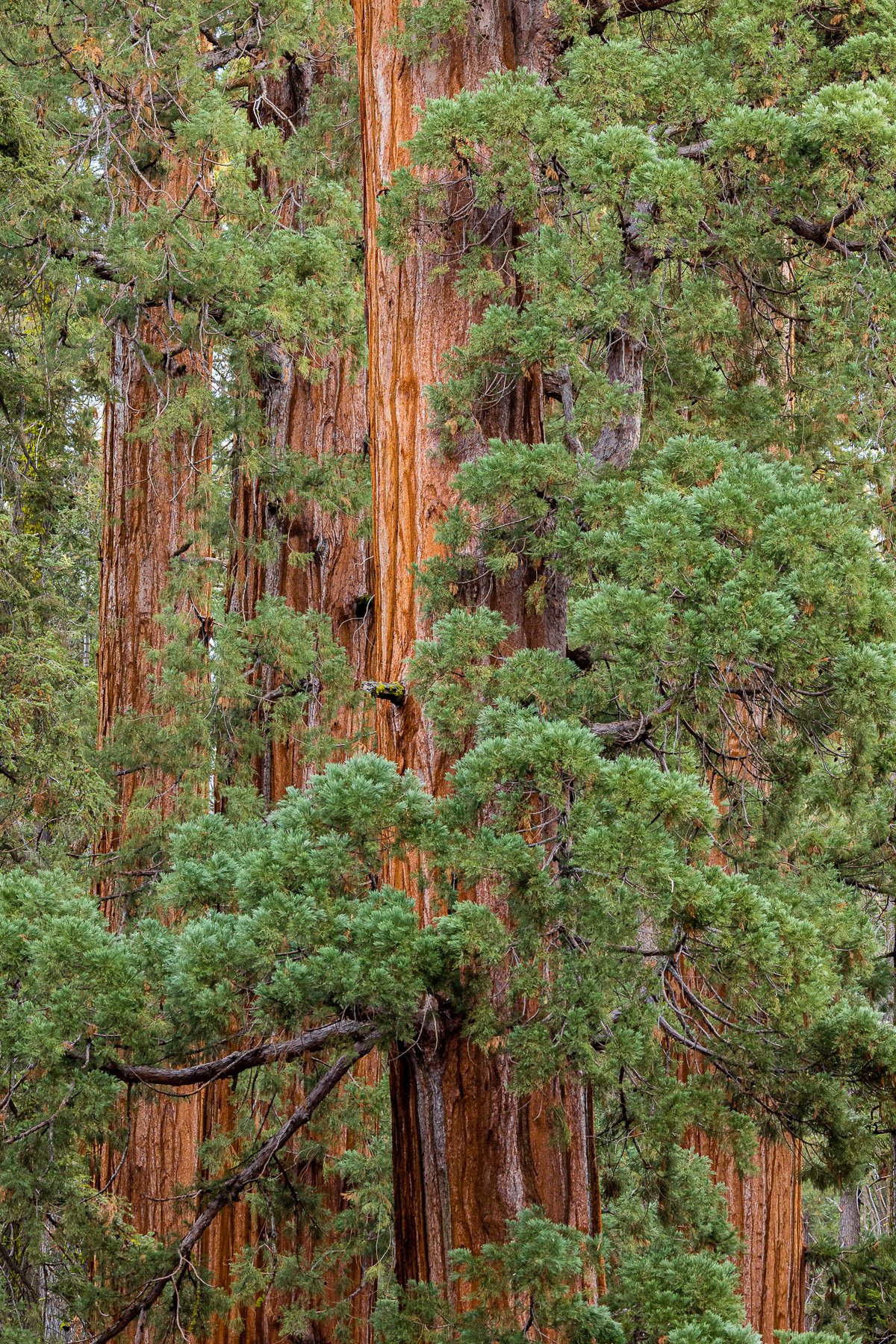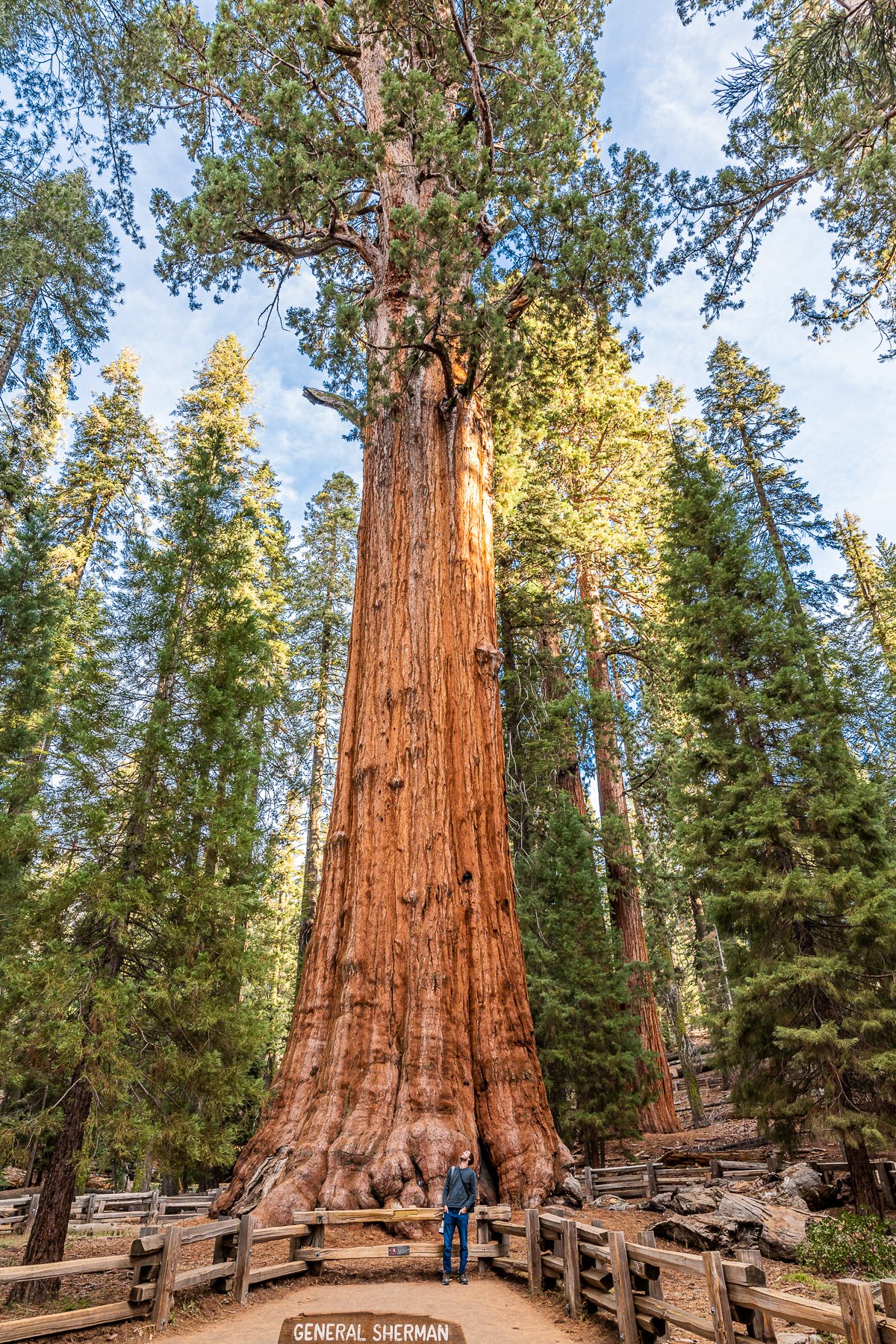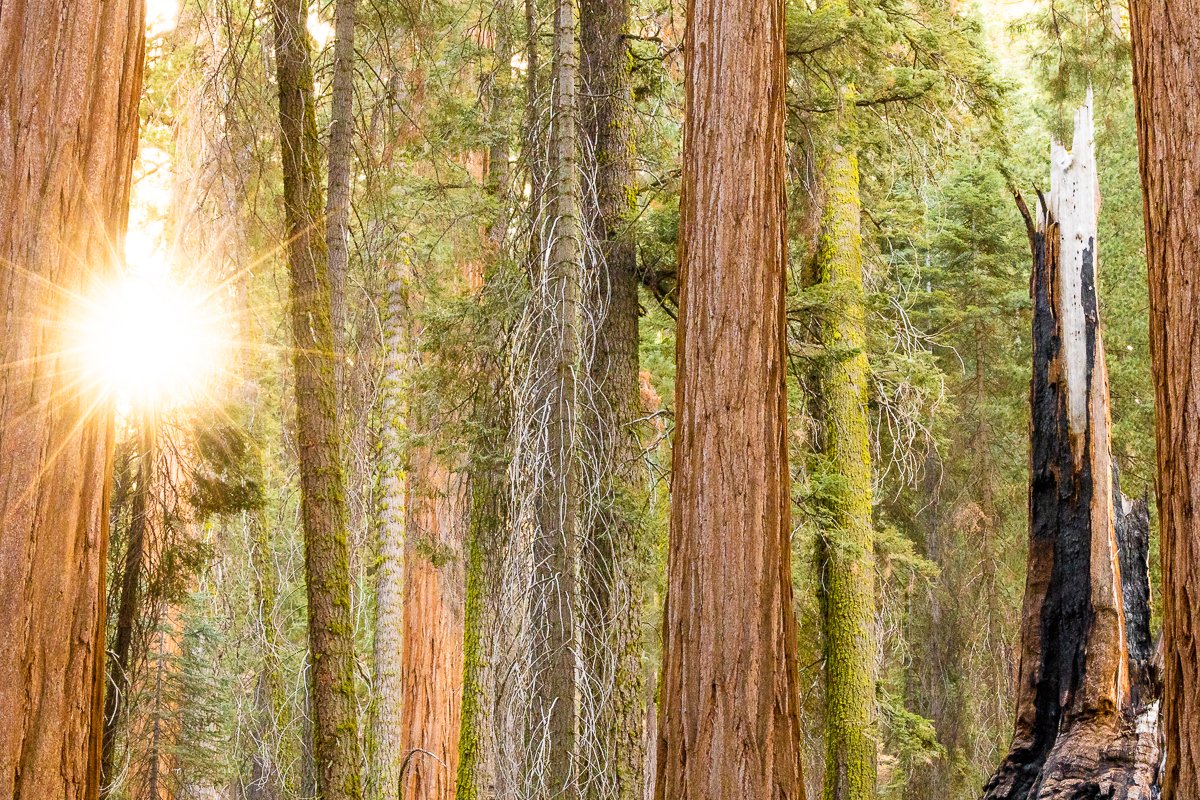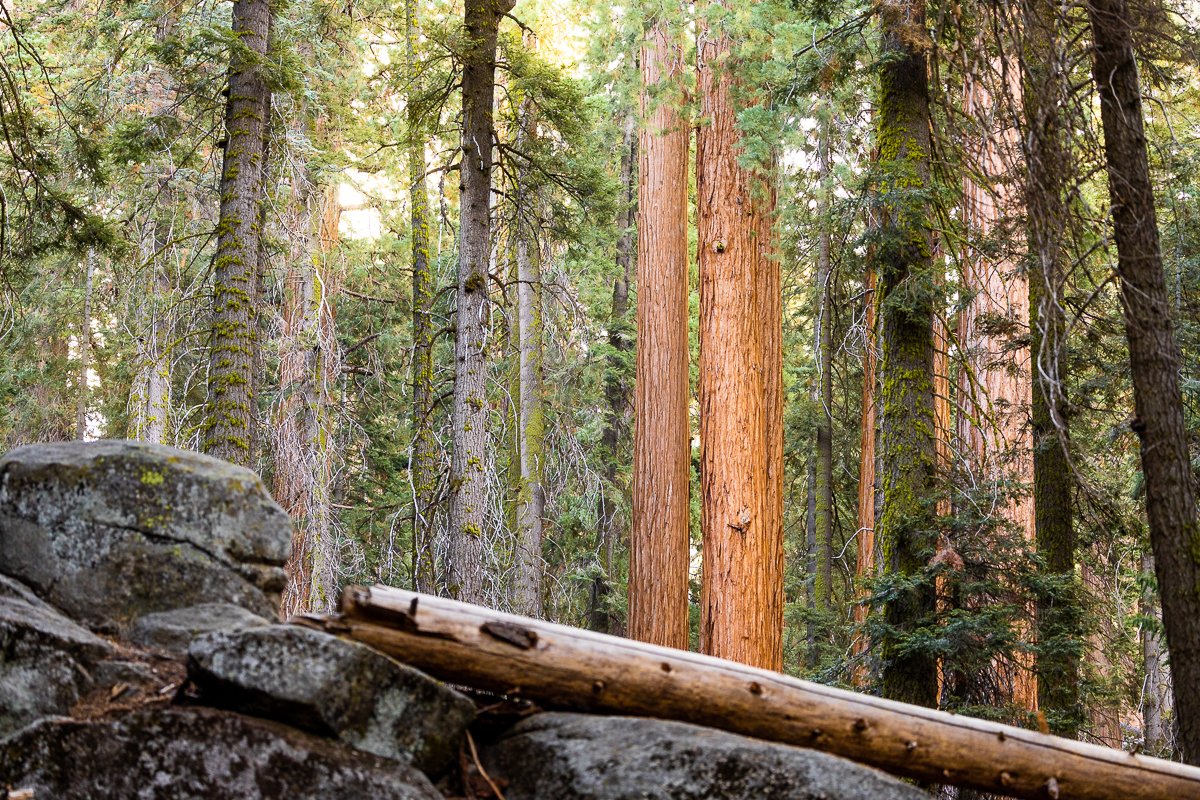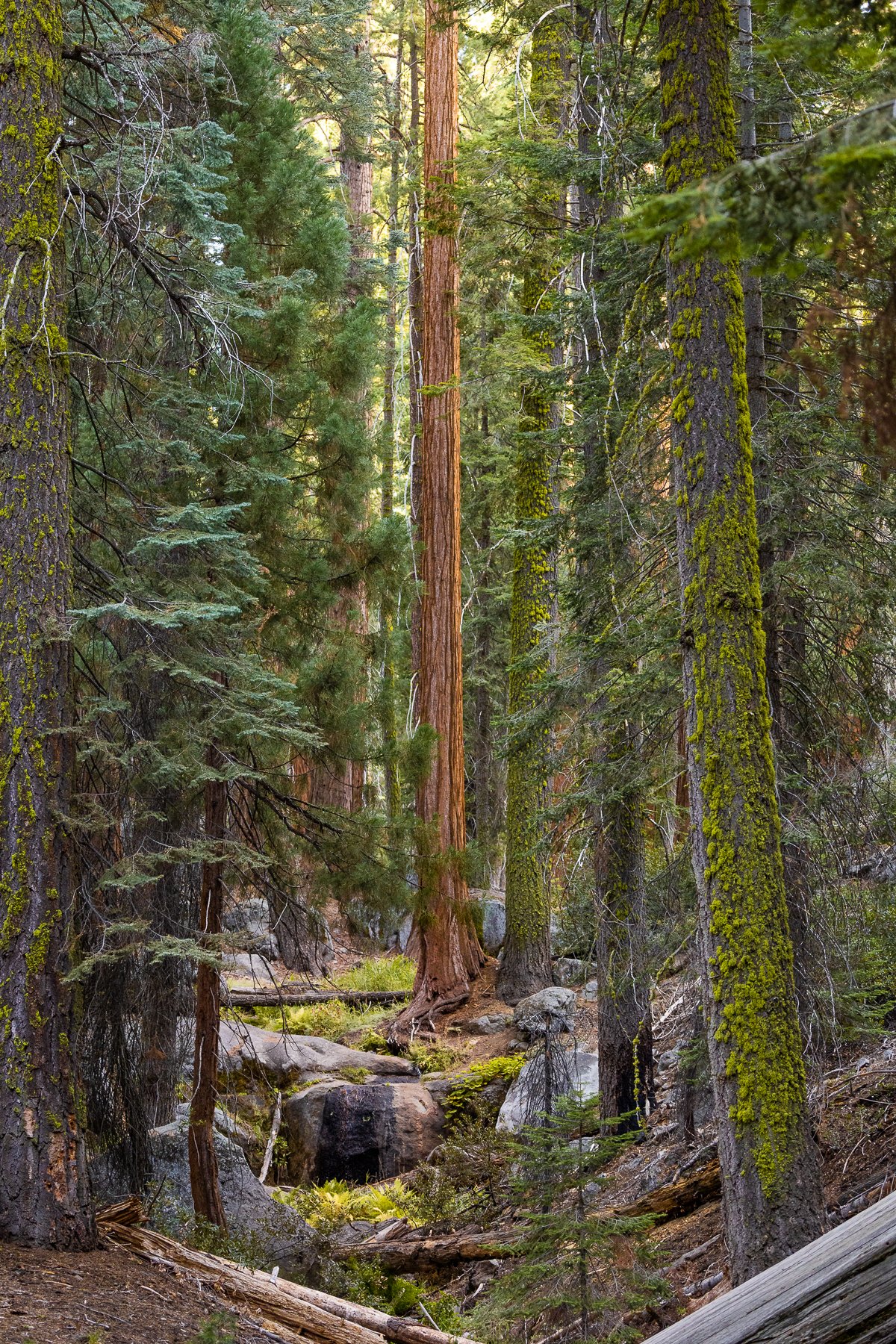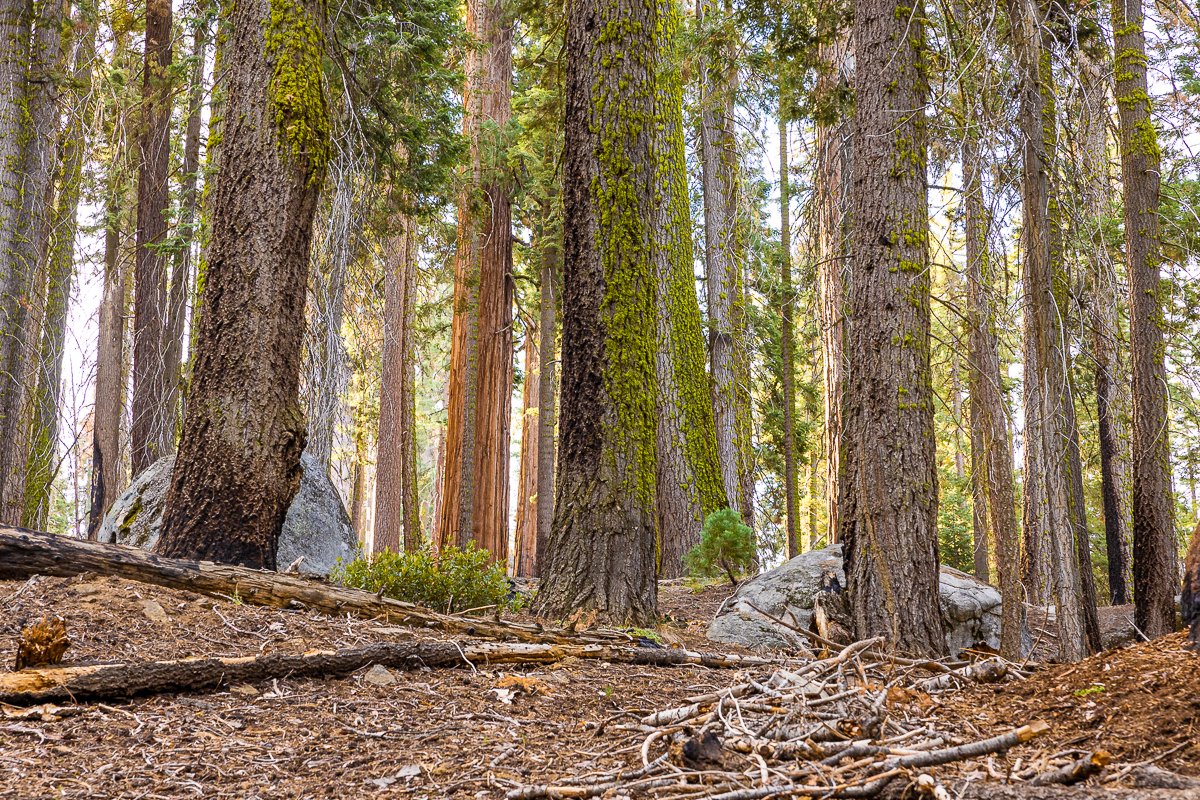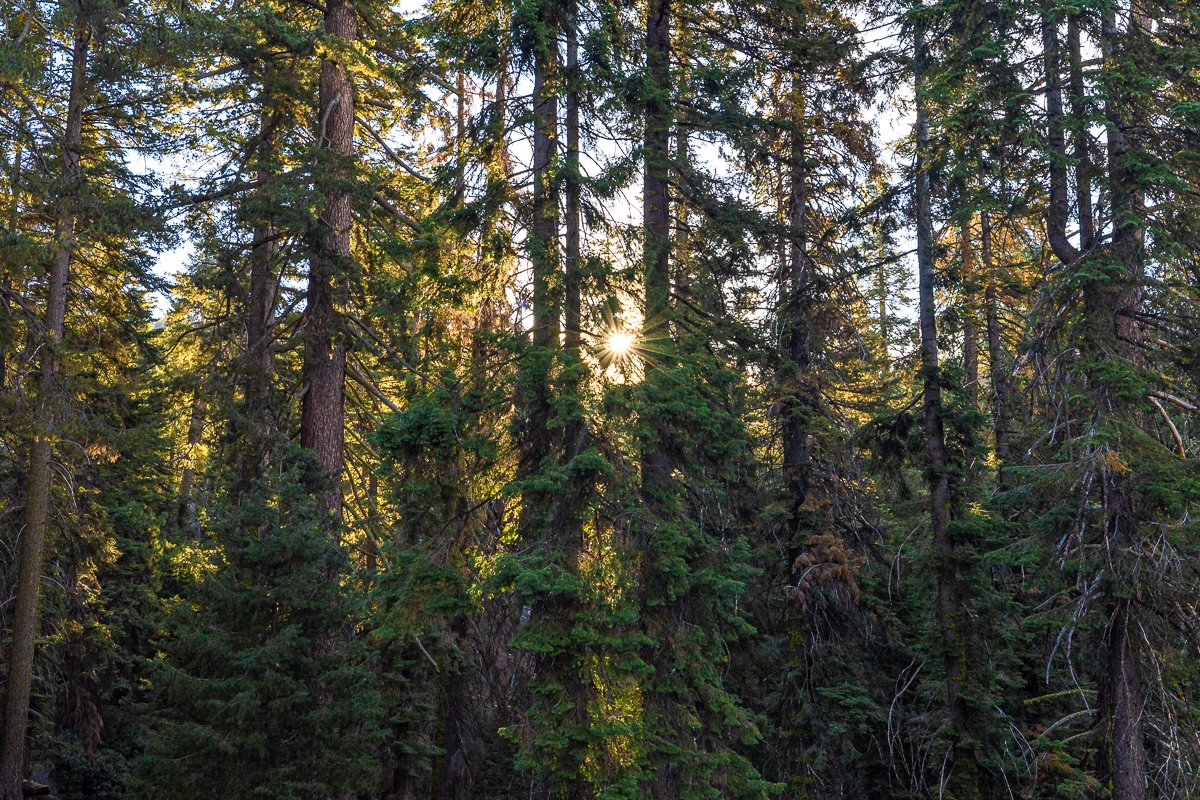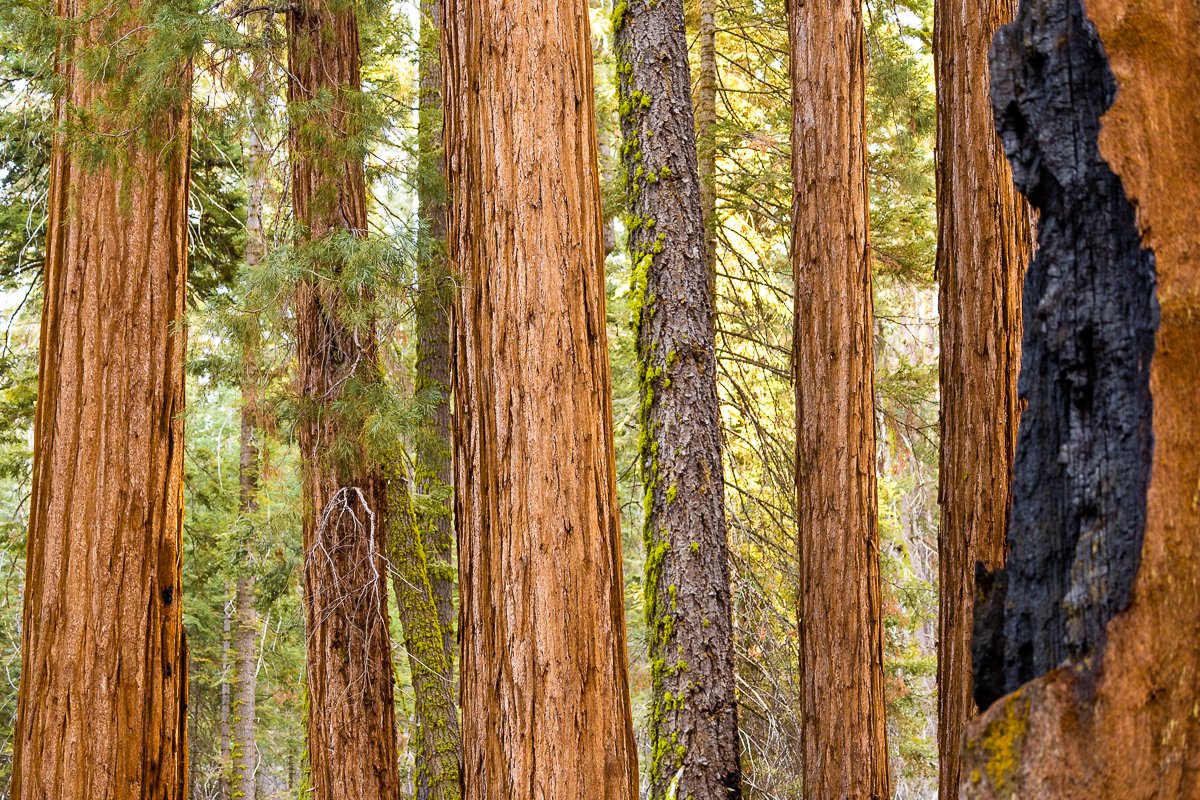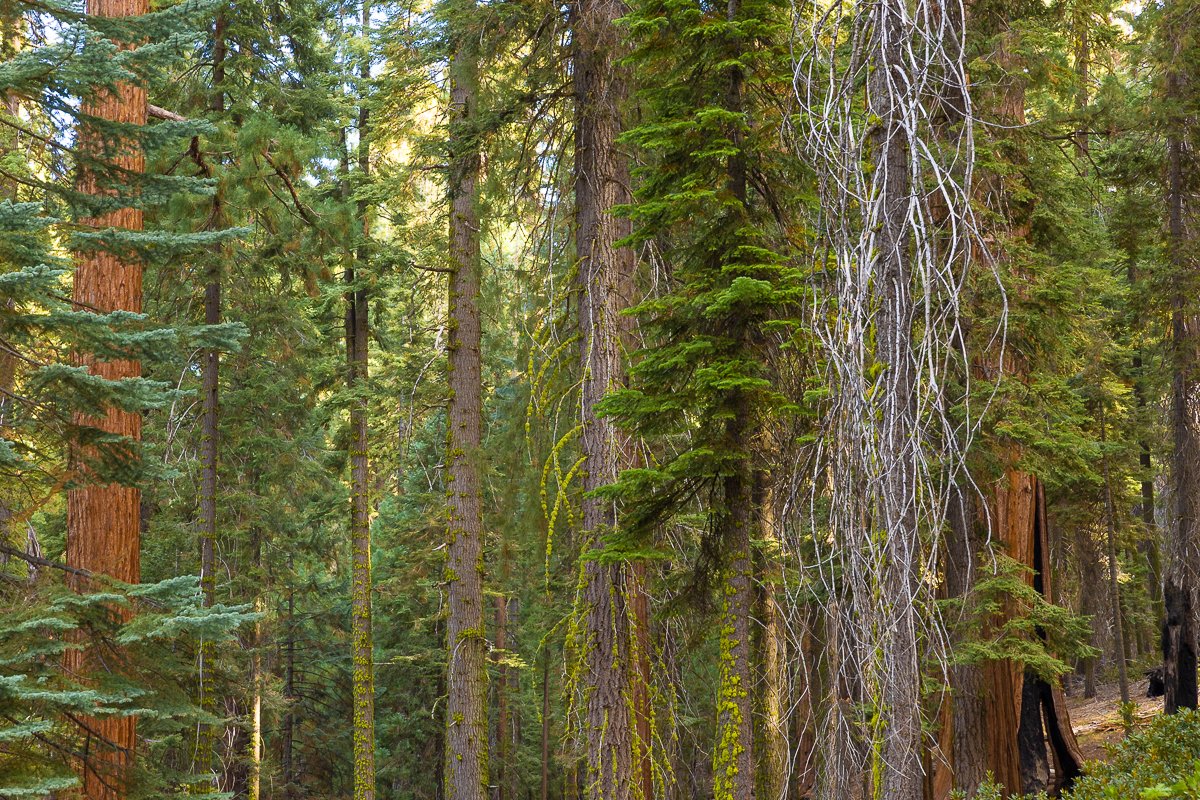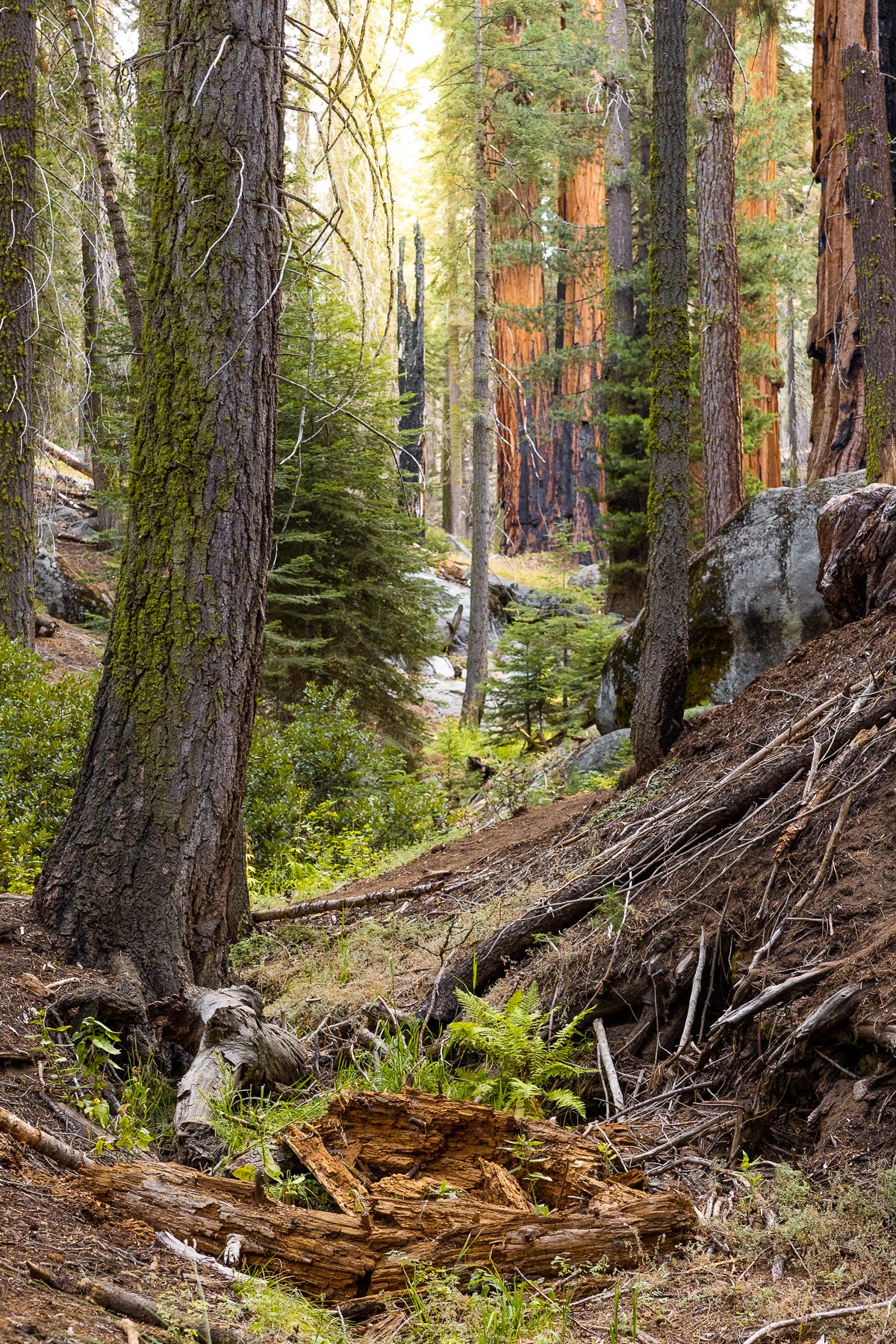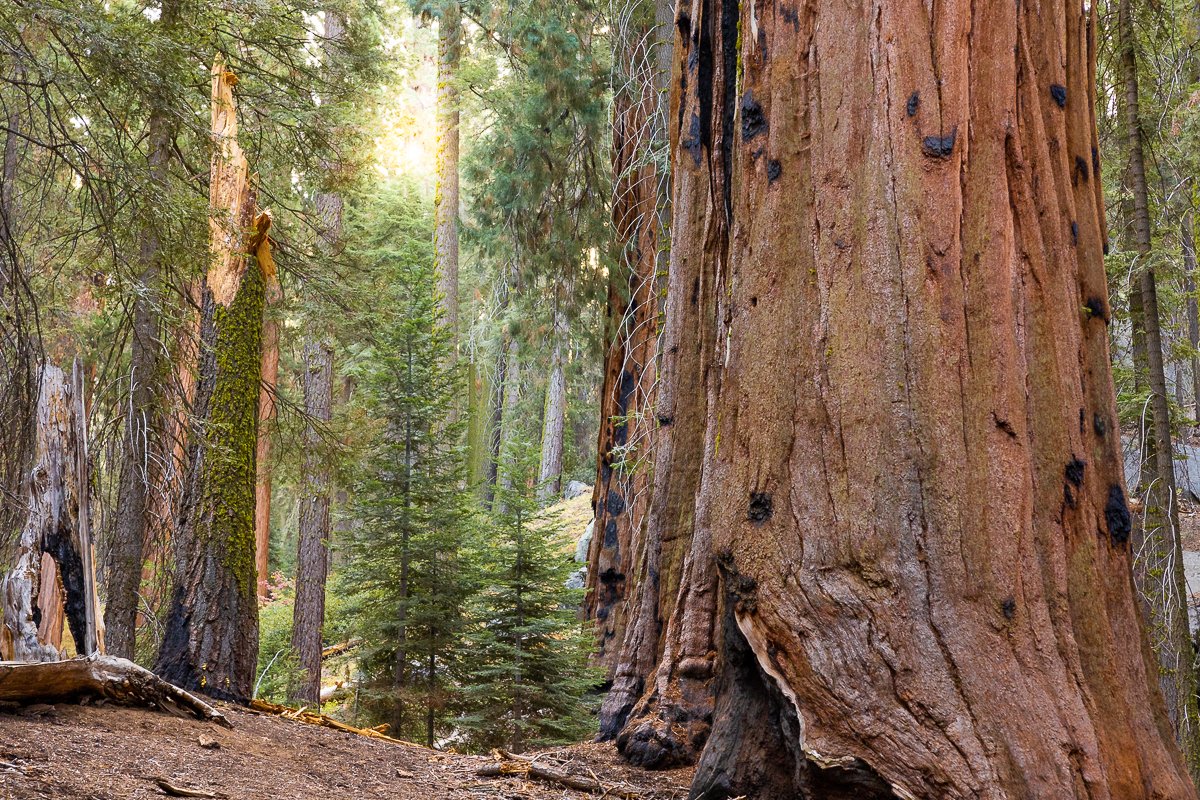The vegetation of Kings Canyon National Park forms a captivating and varied tapestry that blankets its landscapes. Towering pines, including lodgepole and Jeffrey pines, dominate the forests, their sturdy trunks reaching towards the sky. Manzanita shrubs, with their twisted branches and smooth reddish bark, add a touch of uniqueness to the surroundings. As I explored the park, I encountered towering sequoia trees, their massive trunks standing as living testaments to time's enduring power. It is a truly spectacular sight both from the ground and from the air.
sequoia trees
A Story of Life and Death
In the wilderness of Kings Canyon National Park, a tale unfolds — a tale that illuminates the intricate dance between fire and the majestic sequoia trees. These towering sentinels, standing tall for centuries, have borne witness to the transformative power of fire, an element that holds both destructive and rejuvenating forces.
Fire plays a pivotal role in the natural cycle of the sequoia forests, shaping the landscape and nurturing the life cycle of these awe-inspiring trees. It acts as a purifying force, clearing away accumulated debris, triggering the release of sequoia seeds, and creating space for new growth. The thick bark of the sequoias serves as armor against the flames, ensuring their survival amidst the inferno.
However, fire also carries a bittersweet narrative of loss and renewal. The scars etched by wildfires stand as enduring reminders of nature's immense power and unpredictability. Amidst the charred remnants of fallen trees, the cycle of life and death unravels.
Contemplating the delicate interplay between fire and the resilient sequoias, we bear witness to the harmony and tension that define the natural world. It is a tale of life and death, destruction and rebirth that weaves its way through the breathtaking landscapes of Kings Canyon National Park. Let us honor this complex narrative and embrace the enduring spirit of these remarkable trees, for within their existence lies a profound lesson about the resilience and fragility of our interconnected world.
Leaf Peeping Among the Sequoias
Visiting Sequoia National Park during the autumn season - or fall, as we call it here -, I was greeted by a breathtaking display of vibrant foliage. At this time of year, the landscape transforms into a painter’s palette, with hues of red, orange, and yellow splashed across the bushes and trees. The contrast between the evergreen giants and the vivid autumn leaves created a picturesque scene that felt straight out of a postcard. Although it is not a popular destination in the autumn, the coloured foliage we did find made for some really lovely images.
A Stop on the Road
We were lucky enough to catch a captivating sunset at the Generals Highway Scenic Overlook on our drive out of Sequoia National Park. This location was a welcome surprise on our travels, as we hadn’t really planned anywhere in particular for sunset and did not have particularly high hopes for it, given that the park is set in a valley. The viewpoint provides an elevated position to witness the sun descending below the horizon, casting a warm, golden glow across the surrounding landscapes and submerging the hillsides gradually in darkness. As day transitions into night, the rolling foothills, lush forests, and towering sequoias become immersed in the serene and enchanting colors of dusk.
A Journey Through Meadows
Join me on a peaceful walk through two lovely meadows in Sequoia National Park: Crescent Meadow and Log Meadow. These enchanting landscapes offer a serene escape amidst the towering sequoia trees.
Crescent Meadow, also known as "Meadow of the Little Baldy," was named by early visitors who noticed its crescent moon shape. This picturesque meadow has a rich history, as it served as a campsite for the Kaweah Colony, a short-lived utopian community in the late 1800s. Today, Crescent Meadow remains a popular destination for visitors to enjoy leisurely walks and spot some local wildlife.
Log Meadow, on the other hand, gets its name from the fallen sequoia logs scattered across the meadow. These logs are remnants of past natural processes, such as wildfires and the life cycle of the giant sequoias. They serve as a testament to the dynamic nature of the park and provide unique photographic opportunities.
Animals in the Woods
Of course, there is even more to the National Parks than just incredible landscapes - there are also its many inhabitants. On my visit to Sequoia National Park, I photographed quite a few animals we saw along the way: chipmunks, squirrels, mule deer, and even a white-headed woodpecker. The early morning light also makes for great wildlife photography, casting a soft glow on the subjects. See if you can tell which photos were taken earlier in the day and which were taken under harsher afternoon light.
Art in the Forest
Now, now, this is a special one! Join me and step into the world of captivating contrasts as we explore the majestic Sequoia National Park through my lens. In these photographs, I sought to highlight the striking contrast between light and dark, big and small, and the many textures of the forest. The towering sequoia trees, with their lofty branches and intricate textures, serve as the perfect subjects for this exploration. I truly believe some of these images belong on a canvas on the wall - so please sit back, relax, and enjoy this walk through the woods. I think these really are stunning images.
The Legendary General Sherman
The General Sherman Tree Trail in Sequoia National Park is an easy loop walk through the towering sequoias, culminating in an awe-inspiring encounter with the world's largest living tree, the General Sherman. Standing at over 275 feet (84 meters) tall, with a diameter of more than 36 feet (11 meters) at its base, this ancient giant is a true marvel of nature. General Sherman is believed to be around 2,200 years old, making it one of the oldest living organisms on the planet, standing as a testament to the endurance and resilience of the sequoia species. For a bit of scale, the very last image in this blog post features my (tall!) husband completely dwarfed by this extraordinary giant.
In the Presence of Giants
This weekend I am switching gears to the second national park I am featuring in my blog: the incredible Sequoia National Park. These giants are some of the largest living organisms on Earth, and are extremely long lived, with some estimated to be over 3,000 years old. Their bark is thick, spongy, and fire-resistant, which helps protect them from wildfires that are common in the area. They also have other unique adaptations, such as shallow roots that spread wide to anchor themselves in the soil.
I had the privilege of witnessing the park's majestic beauty at the crack of dawn and it was a sight to behold! The rising sun cast a golden glow over the towering sequoia trees and cast an incredible glow deep into the forest. This national park surprised me in that I liked it a lot more than I thought I would, and I think it’s thoroughly underrated! I hope to be able to prove that over my next series of blog posts that will feature this incredible trees.

